20 things to know before visiting Cuba

Jan 5, 2024 • 8 min read
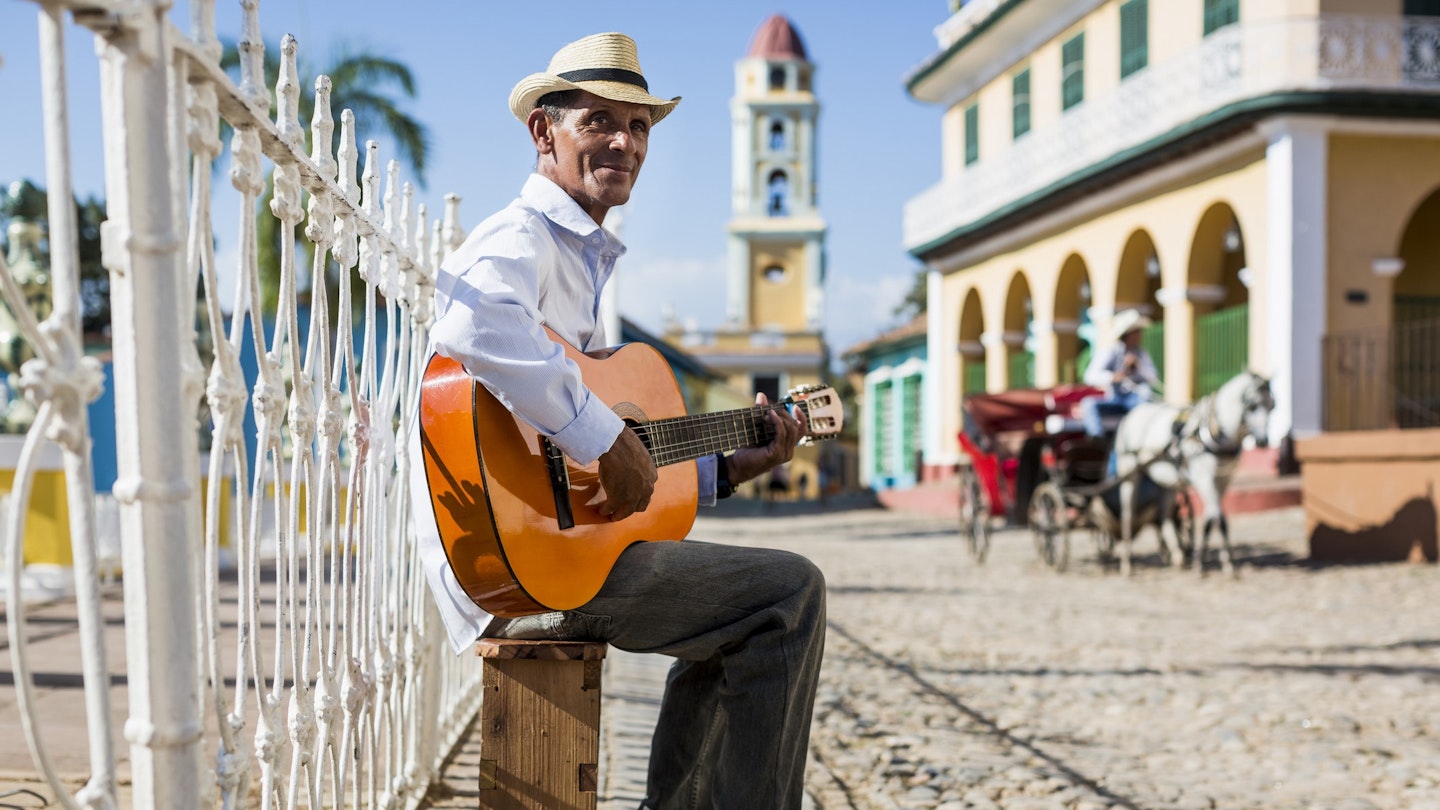
Be ready for your visit to Cuba with these top tips on what to expect © Westend61 / Getty Images
To a first-time traveler, Cuba can seem like a confusing jigsaw puzzle, particularly if you’re breaking free of the resorts and traveling around on your own.
The Spanish spoken here is fast and hard to decipher, many streets have two different names and the country’s fickle and highly complicated monetary situation could fill its own guidebook.
To help you be prepared, here is everything you need to know before planning a trip to Cuba.

1. Double-check your insurance
You are required to have medical insurance to visit Cuba and will need to bring digital or printed proof of your policy. Random checks are made at the airport. If you arrive without insurance, you’ll be asked to buy a Cuban policy at the airport for US$30.
2. Fill out your passenger information in advance
Cuba uses an online form called D’Viajeros to gather traveler information, including immigration and health data, in advance of travel. Fill out the form digitally up to 72 hours before your arrival in Cuba.
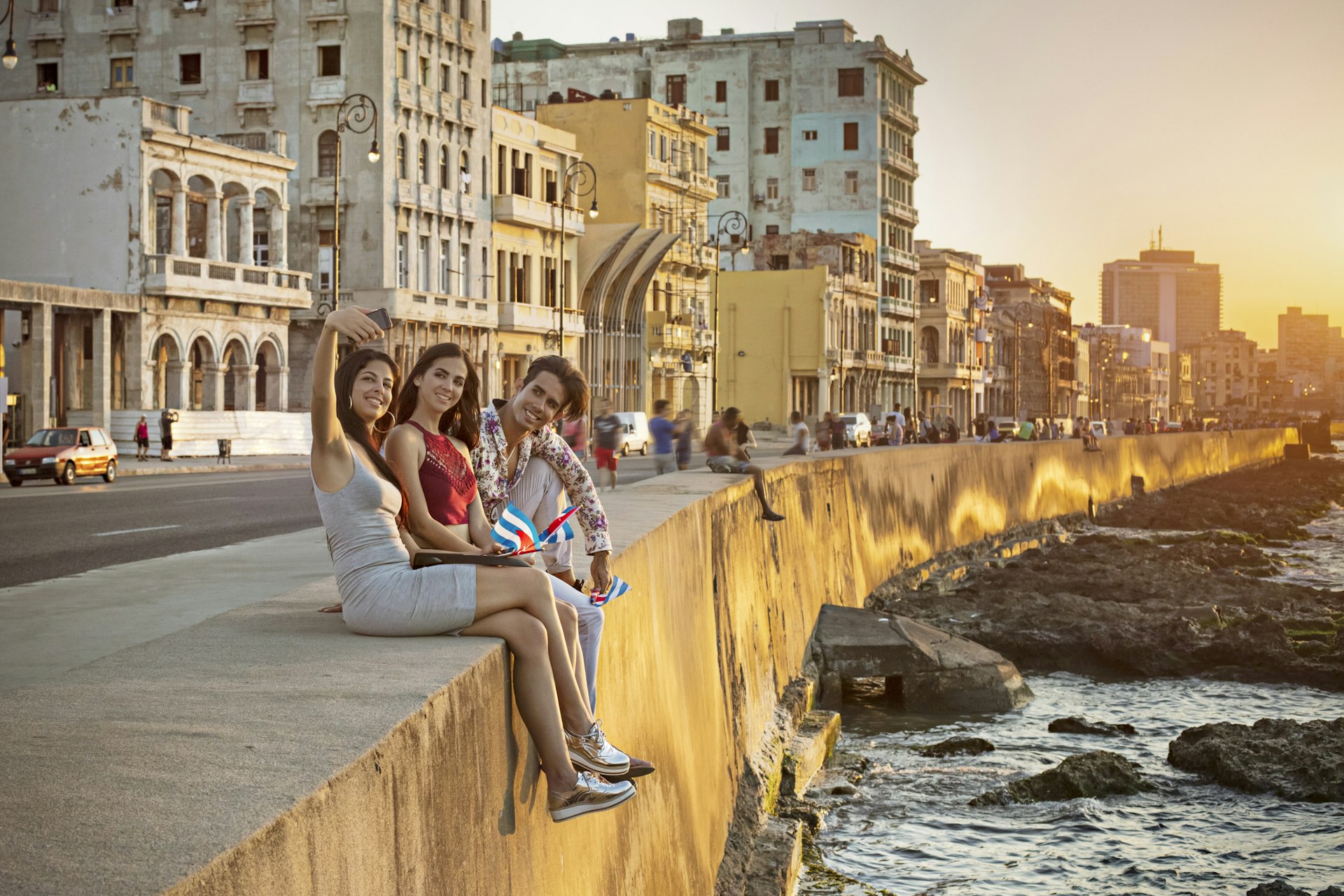
3. Every visitor needs a tourist card
To enter Cuba, all visitors need to present a completed tourist card . It’s usually available through your airline (ask when booking) and included in the price of your ticket.
If not, you can purchase one through a Cuban travel agency. Costs range from US$50 to US$85. Citizens of 20 African and Asian countries require a formal visa to enter Cuba. Check the situation for your country before booking.
4. Cash and currency: it’s complicated!
Money in Cuba is confusing, even to Cubans . Since the country abolished convertibles (CUC) in January 2021 and took the US dollar out of circulation in June 2021, there has been massive inflation and the emergence of a rampant black market. The knock-on effect is a bewildering dual economy.
The official currency of Cuba is the Cuban peso (CUP), but foreign currencies are also widely accepted, especially by private businesses who need hard cash to buy non-rationed goods in MLC (freely convertible currency) shops.
State-run enterprises and banks use official exchange rates. However, the prices of the superior services offered by private businesses generally reflect black market exchange rates.
Hence a main dish in a private restaurant in Havana will cost around CUP$500 (US$21). That’s an expensive meal if you’re paying in pesos bought from a Cuban bank.
However, most private restaurants will also accept payment in euros using a more favorable exchange rate. Some will even have a separate menu with prices printed in euros.
When buying something from a private business – be it a restaurant, casa particular (private accommodation) or taxi service – it’s usually best to pay in a foreign currency. Always ask upfront what currencies they accept and what exchange rate they use for their published peso prices.
Euros is the most interchangeable currency and the one preferred by Cubans. You can also use and exchange Canadian dollars and pound sterling.
US dollars still circulate on the black market, but we don’t recommend bringing them. The best bet, when you arrive, is to keep most of your money in a foreign currency and only change small amounts into pesos for incidentals like museum entry, concert tickets and tips.
5. MLC is a currency with no cash form
The Moneda Libremente Convertible (MLC) is a currency approved by the Cuban government in 2020 that can be used in certain shops to buy higher-end goods.
The currency doesn’t exist as cash and its value is pegged with the US dollar. It’s used mainly by Cubans with special magnetic cards.
Tourists needn’t worry too much about MLC$, although prices will sometimes be displayed in the currency in state-run enterprises such as cigar shops or airport souvenir stores where you can pay with a non-US credit card.
6. Only some credit cards will work
Credit cards are increasingly popular in Cuba and in many state-run businesses are the preferred (and sometimes only) method of payment.
Despite promises made in the Obama era, credit cards linked to US banks are not accepted. Private businesses almost never have credit card machines, meaning your only option is cash.

7. Pack your favorite casual clothes – and men need a shirt
Dress in Cuba is casual, so you can leave your high heels and tux behind. The only real dress code is in cinemas, theaters and nightclubs, where male patrons are required to wear long trousers and shirts with sleeves or half-sleeves.
8. Cuban Spanish is fast and often informal
If you speak Spanish, you’ll find that Cubans mostly use the informal tú form of address, rather than usted . In the plural, ustedes is used over vosotros .
If you don’t know someone, it’s best to address them as señor or señora , though you’ll hear Cubans use all kinds of substitutes such as socio , hermano , papa , chica/o and asere .
9. Cuban cities are where the streets have two names
In most Cuban cities, the streets have two names: a contemporary one that is noted on maps and marked on street signs, and a pre-revolutionary one that is still used widely by the locals.
This can become confusing, especially when locals, unaware of the new street names, start giving out directions or addresses using the colloquial nomenclature. Always double-check addresses and, if possible, get two potential names for the street you’re looking for.
10. Understand the local art of queueing
Cubans have to endure a lot of long waits in boring queues, so they’ve invented a way of doing it that doesn’t involve standing in line. In a Cuban queue, you simply roll up at the bakery/clinic/visa office and yell out to the assembled masses, "Quien es último?" (Who’s last?).
Hopefully, someone in a 400m vicinity will answer your polite entreaty with the word, "yo" (me). That person is your yardstick. As long as they’re still around, feel free to go for a walk, sit in the lotus position or buy ice cream. When they get called up, be on your toes, you’re next!
11. Ask questions more than once
Thanks to heavy bureaucracy, answers to simple requests aren’t always straightforward – or even correct. Probe politely and ask at least five different people before you make important decisions.
12. Bring something to keep you warm on a cold bus journey
Cuba has a countrywide state-run bus service called Víazul that connects all of the main cities and some of the smaller towns. Prices are charged in MLC$ (the same rate as the US$) and tickets must be paid for with a credit card either in person or online.
A second service called Conectando, run by Cubanacán, also puts on buses in peak season along some of the more popular routes. Bring a sweater/jacket for long bus rides – the air-conditioning is akin to a chilly day in Vancouver.

13. Cuba is considered a safe place to travel
Cuba is one of the safest countries in the Americas in terms of violent crime. Pick-pocketing is more common but not rampant, and is mostly avoidable if you follow a few basic precautions: Wear a money belt, use safe boxes in hotel rooms and don’t flash your cash in public.
14. Solo female travelers report receiving unwanted attention
Solo female travelers report experiencing a good deal of unwanted attention, but it didn't necessarily spoil their enjoyment of traveling in Cuba.
There is a fine line between being open and friendly and harassment, and some men can cross that line by being overly familiar or asking too many personal questions. Learn some key phrases in Spanish that make it clear when you're not interested.
15. Beware of forgeries
Never change money with unlicensed traders on the streets. You run the risk of receiving estafas (forged notes).
16. Bring your own medicines
On one level, Cuba has a good health system (it invented and quickly distributed three COVID-19 vaccines); on the other, it is perennially short of pharmaceuticals.
Bring all the prescription medications you think you’ll need, as well others you might like ibuprofen or paracetamol. If you’d like to donate some medicines to the people of Cuba, it is currently possible to bring in 10kg of medical supplies tax-free (pack them in a separate bag).
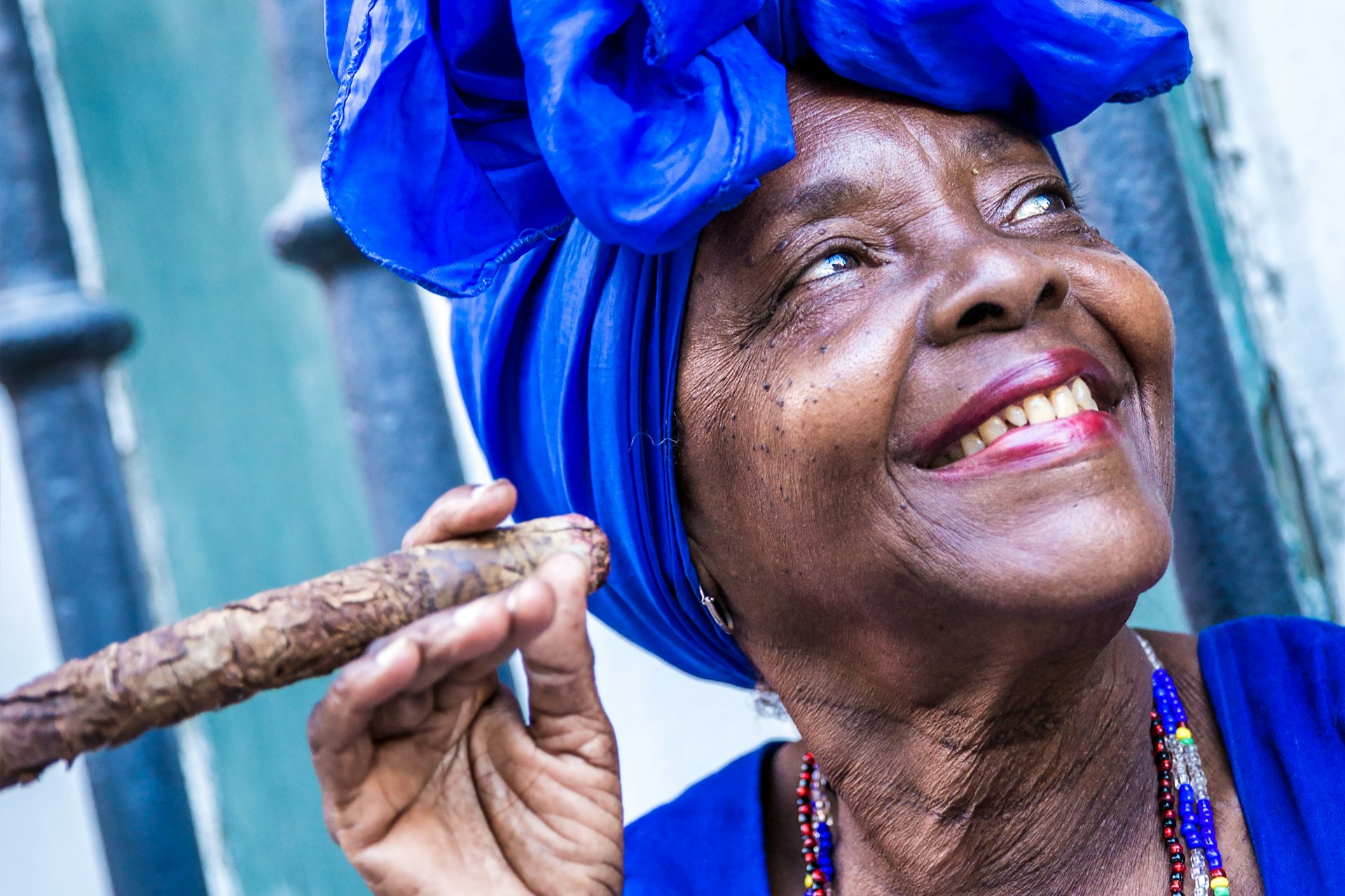
17. Avoid dodgy cigars
Cuba has its share of jineteros (touts) spinning elaborate stories about super-cheap, high-quality cigars procured by their brother/mother/cousin from the factory. Don’t believe them. Instead, buy your cigars in state-run shops such as the Casa del Habano chain. Cigars sold on the street are invariably factory cast-offs and not genuine.
18. Driving is not as easy as you think
With light traffic on the road, driving might seem like an easy proposition, but with elevated rental prices and cars often in short supply, it’s not always so.
Add in sporadic signposting, potholed roads and a wide array of hazards – goats, horses, bicycles, kids and slow-moving, fume-belching trucks – and you might want to consider getting the bus or, at least, employing the services of a chauffeur.
19. Bring toilet paper and sanitary products
The pandemic made the provision of antiseptic hand lotion more common, but the same can’t be said of toilet paper. Carry your own roll and/or gravitate to four- or five-star hotels when you’re caught short in the city.
Re-usable pads and silicon cups, or disposable pads and tampons are must-pack items if you're expecting your period while you're in Cuba. These are in high demand here.
20. Don’t drink the water
The water won’t kill you, but it might give you a little queasiness or an upset stomach. Fortunately, bottled water is abundant and cheap. An even better idea is to bring your own filter bottle or water purification tablets.
This article was first published February 2022 and updated January 2024
Explore related stories
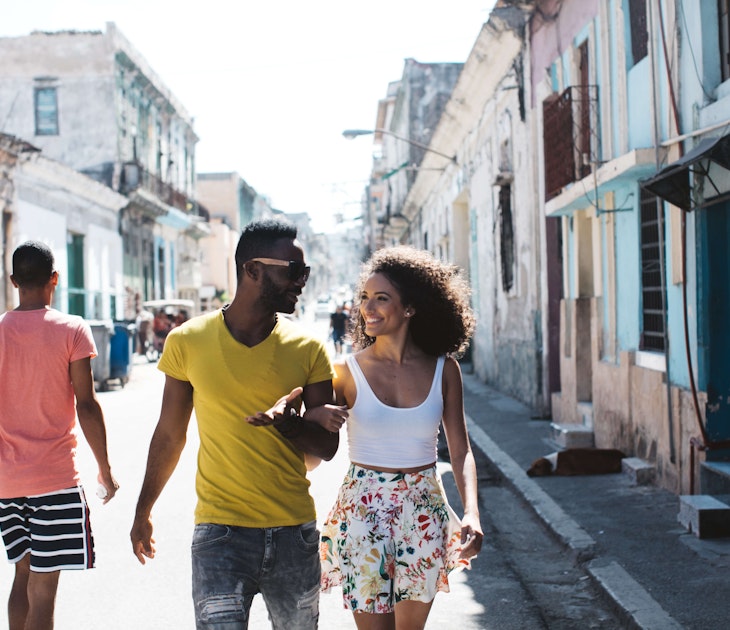
Tips & Advice
Jan 18, 2024 • 4 min read
Travelers often have questions about the visa process for Cuba and whether US citizens can even visit. Here’s our guide to Cuba’s visa requirements.

Jan 9, 2024 • 4 min read
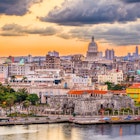
Jan 9, 2024 • 6 min read

Jan 7, 2024 • 10 min read
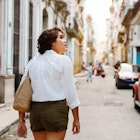
Jan 6, 2024 • 7 min read

Jan 5, 2024 • 4 min read

Nov 24, 2023 • 7 min read

May 6, 2023 • 9 min read

Jan 6, 2023 • 7 min read

Jan 5, 2023 • 8 min read

30 Things You Must Know Before Travelling To Cuba
By: Author Sunset Travellers
Posted on Last updated: February 1, 2021
Categories Central America , Cuba , Travel , Travel Advice
There are a lot of Cuba travel tips to know of before visiting this unique country for the first time.
Cuba was on our bucket list since we met and started our journey around the world a few years ago.
Although we travelled to many magnificent places, we never made it to Cuba, so this time we have decided that no matter what, we will explore this unique country.
Little did we know what to expect once we landed in Cuba, therefore, we highly recommend to read our guide.
There is a lot of Cuba travel tips for tourists travelling to the country.
We are covering the essential Cuba travel tips every traveller should know before visiting the country.
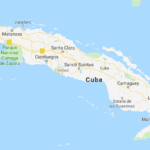
Map of Cuba
Here are our 30 Cuba travel tips for everyone travelling to the island :
1. best time to travel to cuba.
The best time to visit Cuba is from towards the end of the year, starting early December up until April.
With the island hot tropical climate, the summer’s average temperature is 24 degrees, whereas during the winter months of January and February expect less than 15 degrees.
From May to October, you can expect a lot of rain as the island is in a wet season.
The peak tourist season runs from mid-December to mid-March so expect to pay top prices for accommodation, tours and more.
One of the first Cuba travel tips: visit the country during a shoulder season where you still have good weather but lower accommodation prices.
2. Know Cuba visa requirements

If you are planning to visit Cuba, chances are you need a visa to enter the country.
Only travellers from 18 countries can freely travel to Cuba without any visa. The rest of us will have to purchase a tourist card at the airport before check-in.
For American passport holders, this process is a bit trickier, and you can enter Cuba under specific categories .
3. You must have an outbound flight from Cuba
When travelling to Cuba, you must show an outbound flight. Otherwise, you won’t be able to board the plane.
We were coming to the island from Mexico and had to show our onward flight to Miami at the time of check-in.
There is no way around it, therefore, make sure that you have an onward flight. You can easily book your flight via Skyscanner here.
4. Print out all essential documents needed to enter Cuba
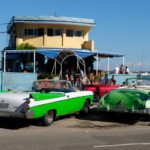
Taxis in Cuba
Other than your visa or tourist card, make sure to print out all crucial documents before travelling to Cuba.
Travel insurance, tour bookings, hotel reservations or any other important papers might become very handy to have.
We haven’t seen any internet cafes in Cuba, therefore having all documents with you might be the best option since wifi is almost nonexistent here.
We managed to travel the island with all info stored in our computers, but many Cuba travel tips sites recommend having everything in print.
5. Have appropriate travel insurance for Cuba
Make sure to purchase a suitable travel insurance coverage before travelling to Cuba.
We can’t stress enough how important it is to have travel insurance when going abroad.
Although we weren’t asked to provide proof of travel insurance at the airport, there is no guarantee that they won’t ask you.
Also, you don’t want to travel to an unknown destination without this kind of backup.
It’s best to be safe and get suitable travel insurance before your travels.
Please do not ignore any of these Cuba travel tips.
6. Book accommodation in Cuba well in advance

Casa Particular in Cuba
If you are planning to visit Cuba anytime soon, make sure to book your accommodation well in advance.
Many websites do not work in this country; therefore it might be very time-consuming walking from place to place and asking for prices.
7. Airbnb or Booking.com websites and apps don’t work in Cuba
If you just landed in Cuba and planning to find your accommodation through Airbnb or Booking.com , you should know that these apps and websites do not work in Cuba.
The most common accommodation in Cuba is called Casa Particular which are rooms or apartments rented by locals for a daily fee.
Important Cuba travel tips: these type of accommodations are very cost effective and excellent if you are on a budget.
Many owners advertise their Casa Particular vacancy on Airbnb and for $25+ you can support the locals and sleep in a lovely room or apartment.
We rented two bedroom oceanfront apartment for as little as $35 a night.
The only way to book an Airbnb when you are already in Cuba is to go through a turbovpn app (may not be available on apple app store).
If you are planning to use Airbnb for the first time, here’s $54 discount off your first stay. Enjoy!
We also cover five essential tips for booking your first Airbnb here.
8. Decide how much cash you will need in Cuba
Take as much money to Cuba as you possibly can!
We travelled to Cuba from Mexico and withdrawn as much peso’s as we could. The money obviously still didn’t last too long.
We highly recommend that you take Euro or Pounds with you and exchange them once you land.
All American debit and credit cards do not work in Cuba.
We were able to use our Irish Visa and Canadian MasterCard to withdraw money from the ATM’s, even so, it was a nightmare as the ATM’s only gave so much cash at one time and had a mind of its own.
Our Cuba travel tips: do not take US dollars with you as you will be charged additional 10% on top of the exchange fee. It’s just not worth it.
9. Keep in mind that Cuba has two currencies
Here’s the current conversion rate from Euro to CUC and CUP in case you wonder:

Euro to CUC conversion rates

Euro to CUP conversion rates
CUP and CUC are the two currencies used in Cuba.
CUC – Convertible Peso is used mainly by tourists, and you can pay for almost everything with this currency.
CUP – The National Peso is used mainly by locals and to pay for public transportation.
When exchanging our Pesos, we weren’t even able to choose and were given the CUC currency.
10. What you need to know about ATM’s and CADECA’s in Cuba
The easiest way to take money out from your account with your bank card in Cuba is to go to CADECA.
CADECA’s are currency exchange places where you can also take money out with your card. You can find them at most hotels.
We were taking money out of our Irish debit card, and it took few seconds to get the money out.
Our Cuba travel tips: make sure to bring along your passport as otherwise, they won’t allow you to withdraw any money from your account.
Some ATM’s will accept your card, but it might take time to withdraw some cash.
It took us five attempts to finally be able to withdraw some money out of the ATM as it had low withdrawal limit. Eventually, our banks blocked the cards because of too many attempts.
11. Most places in Cuba don’t accept bank cards

Can’t pay for Mojito with a card
Trying to pay for anything with your bank card can be a nightmare.
We booked a few day getaway to Varadero with tourist desk at the Hotel Nacional, and it took an hour to pay for it with a card.
The hotels do not have card machines, so your card gets imprinted on a paper, and the transaction is confirmed via phone call.
Let us tell you that the banks do not answer the phones! It will be much easier if you go to the nearest CADECA and take money out.
12. Inform your bank when you are going to Cuba
Don’t make the mistake of trying to withdraw cash and get declined just because you forgot to tell your bank that you are travelling to Cuba.
Different countries have different rules, and we were usually able to advise the bank via the bank app.
For Cuba however, our banks needed to be called and told the exact dates we would be here.
13. Everything you need to know about wifi in Cuba – Cuba wifi cards – Cuba wifi spots
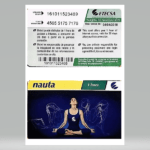
WiFi cards in Cuba
There is no free wifi in Cuba , and that’s a fact.
The only way you can connect to the internet is by purchasing cards called ETECSA.
It is a small scratch card that will allow you to connect to a network at hotels and major hotspots around the big cities.
If you spot a group of people in the park or on the side of a street and looking at their phone screens, it means that there is a wifi hotspot.
Expect to pay anywhere from CUC 1.50 to CUC 5 for an hour of internet.
Our Cuba travel tips: the cards are valid as long as you have minutes on it so log out of internet as soon as you are finished.
Some hotels sell 5-hour cards, but usually, you have to be a hotel guest to purchase one.
Hotel Nacional, for example, sells their cards for CUC 5 per hour, valid only for 24hrs.
The wifi is very slow in Cuba so don’t expect to do any Skype calls or do any work.
14. There is no roaming service available in Cuba
As soon as you land you will notice that your phone has no cell phone service in Cuba and there is no way to get any coverage.
If you need to make an international phone call, it will have to be made from a phone centre, and the service is expensive.
15. Download Google maps before travelling to Cuba

Sightseeing Havana, Cuba
Make sure to download google maps before you board the plane or get offline maps such as maps.me or galileo offline maps which allows you to use your phone’s GPS to show your location.
16. Your favourite US websites won’t load in Cuba
There is literally no USA website that will work in Cuba. Do your research well in advance and definitely before you get to Cuba.
We highly recommend booking accommodation and activities in advance to make your trip pleasant and less stressful.
Tripadvisor is great for arranging accommodation and sightseeing being it in Havana, Trinidad or Vinales.
17. Best way to book your tours in Cuba

Varadero, Cuba
The easiest way to explore Cuba is to book several tours before travelling to the country; this is usually also the most expensive way.
We arrived in Cuba with having organised nothing but Airbnb for the first week.
You can find local agencies in most of the major cities who can recommend and book a tour for you.
Most of the 3+ star hotels will have a travel desk where you can make a reservation even if you are not staying at that particular hotel.
We booked several tours, accommodations and transfers through different hotels and it is the easiest and fastest way to arrange your trip if you haven’t done so before arrival.
If you are looking for the best deal for the same tour, there is no need to shop around as most places will give you the same set price.
Keep in mind that you will need to have enough cash to pay for the activities/tours as they do not accept cards.
If you are planning to explore Cuba on you own, make sure to read our guide to ‘ 10 best things you should do in Cuba, Havana’ .
18. Know how to get around Cuba
If you are planning to drive around Cuba and explore the entire island, the easiest way to travel between cities in Cuba is by bus.
You can book a bus transfer to your desired destination with one of many tourist desks at the nearest hotels.
We paid $25 for a bus transfer from Hotel Nacional in Havana to Dreams Hotel in Varadero.
Viazul is one of the most known bus companies that will take you to most cities in Cuba if travelling independently.
Our Cuba travel tips: if you intend to travel around Cuba via public bus, make sure to arrive at bus station well before departure as tickets sell out fast and there is no way to book them online.
19. Cost of a taxi from the airport to Havana city in Cuba
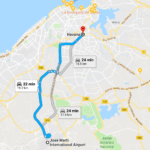
Distance from Havana airport to the city
The distance from Havana Airport to the city centre is less than 20km (about 20 minutes drive), and it can cost on average CUC25-35.
We paid $35 to get from the airport to our Airbnb located next to the Hotel Nacional in a private vintage taxi.
There is also a money exchange place, so you can quickly change your money at Havana airport.
Taxis are also useful if you are looking to explore the city in style. They will usually make you a deal if you wish to hire a vintage taxi for few days to explore Cuba.
It will cost you about CUC 12-15 to get from the centre of Havana to Hotel Nacional in a vintage taxi.
20. It is easy to get around Havana by foot
Havana , like other major cities in Cuba, is walkable and if you are trying to budget your money, you can easily walk everywhere.
Travelling around Cuba is safe, and there is no better way to explore your surroundings and truly embrace the Cuban culture.
It will take you bit longer to get from point A to B, but you will have the opportunity to discover the cities.
21. Do your Cuba souvenir shopping before you get to the airport

Havana Club souvenir shopping
If you are planning to get some souvenir shopping done, make sure to do it beforehand.
Havana airport, for example, is small and there are almost no shops where you could do some last minute shopping.
There is also just one bar/food counter, and the food isn’t by any definition healthy.
We highly suggest getting some snacks beforehand so you can have an alternative option.
Our Cuba travel tips: there is a lot of unique things to buy in Cuba and souvenirs you can only get here. Some of the best gifts from Cuba include Cuban cigars, Cuban rum, Habana 179 perfume and much more.
22. Be prepared to queue everywhere in Cuba
One of the most apparent Cuba travel tips we received:
‘No matter where you go, be ready to queue here.’
Whether you need to take money out of ATM or purchase some goods, nothing happens fast here so you might as well get used to waiting in lines here in Cuba.
23. Is it safe to drink tap water in Cuba?
We don’t recommend drinking tap water in Cuba.
Most Cubans will boil their water before consuming, but it might not be the best option for tourists.
We highly recommend that you stock up on bottled water.
On many occasions when at supermarkets, as soon as the water gets delivered, queues form, and the water disappears fast from the shelves.
Our Cuba travel tips: if you can’t find bottled water at a supermarket, go to the nearest petrol station shop as they usually are well stocked up with water.
24. Supermarkets in Cuba aren’t the same as back home
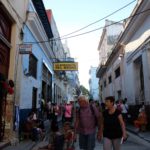
Eating out in Cuba
Buying grocery in Cuba might not be as easy as it seems. We rented an Airbnb in the hope of cooking our food, however, the nearest supermarket barely had any products in it.
You will usually find canned goods, some pasta and if you are lucky some bread.
There are however local street markets selling fruits and vegetables. Ask around, and you are guaranteed to find one near you.
If you want to avoid the stress of cooking your food, there’s a lot of restaurants to choose in Cuba.
25. What should you expect from restaurants in Cuba
There are many Cuban restaurants in Cuba, but due to its trade restrictions, the island lacks a distinctive cuisine.
We found few excellent restaurants, unfortunately, most of them were lacking many dishes on the menu and meals were rather bland.
We will make sure to share our best restaurants in Havana with you in a next blog post.
26. What to do when you get sick in Cuba

Pharmacy in Havana, Cuba
Our Cuba travel tips: if you are planning a trip to Cuba, make sure to stock up on your ‘go to’ medication in case you will need it.
Whether you often get headaches or upset stomach, make sure to have some medication in case you get sick.
I got flu in Cuba during a public holiday, and it was a nightmare to get any medication. The only thing we were able to find was a jar of honey, so my flu lasted about two weeks.
Not a great start to a holiday!
27. Make sure to carry some coins with you
If you need to use a public restroom at a restaurant, bar or anywhere else, you will most likely come across a ‘toilet lady’ sitting outside with a small tray where you put your coin for using the facility.
Higher end hotels don’t make you pay, but we came across many restaurants and bars that will require you to leave some money for the cleaning lady.
28. Don’t fall for the touts
We found that many Cubans will approach us trying to recommend restaurants or give directions.
Although some people are genuinely interested when asking ‘where are you from’, most will take you to their recommended bar or restaurant where they will charge a commission or expect payment from you.
Especially when you are wearing a watch, they will ask you ‘what time it is’ and try to start a conversation with you.
Our Cuba travel tips: avoid wearing a watch in large cities as you are guaranteed to be noticed.
29. Power plugs and voltage in Cuba
Cuba has 110v, and the power plugs look like this:

Cuba power plugs
Many modern hotels will have a dual voltage plug with 220v available to you.
30. One of the things you should not do in Cuba
One of the most important Cuban travel tips we got from other travellers is not to forget to tip in Cuba.
The basic salary in Cuba is very low comparing to the cost of living therefore many Cubans rely on tips they receive from tourists to support their families.
We hope that you enjoyed our 30 Cuba travel tips and learned a few things before travelling to the destination.
Heading t Cuba soon? Make sure to read our ‘ top 10 things to do in Havana, Cuba ‘.
We appreciate if you share our 30 Cuba travel tips with your friends and family by just pinning the below image to your Pinterest board.
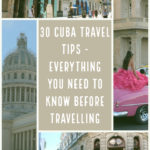
Notify me of follow-up comments by email.
Notify me of new posts by email.
Choose your language
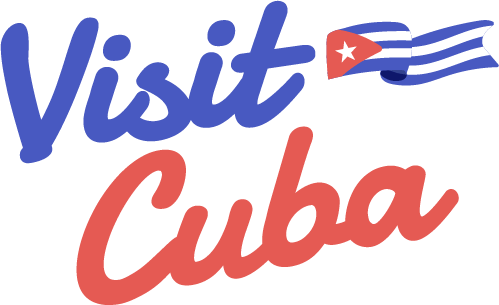
Welcome to Cuba
More than you imagined
Plan your holiday to Cuba
Cuba Up-Close
Six Essential Tips for Your Trip to Cuba 2022
From alternative accommodation to bypassing the restrictive internet in Cuba, check out these six essential tips for your trip to Cuba.
Cuba up-close
When is the best time to visit Cuba?
Planning a visit to Cuba? The island offers sunny skies and activities year-round. Learn more about its seasons, weather, and cultural calendar.
Is it safe to travel to Cuba?
Here are some of the best safety tips to follow as you enjoy your trip, and use public transportation in Cuba.
Greatest Waterfalls in Cuba
Imagine finding yourself in Cuba, surrounded by an exuberant natural environment - where the vivacious green mountains stretch out into a splendid blue sky - while the fresh Caribbean seabreeze brightens your face. And on this tropical voyage, you discover a land of waterfalls on every corner of the island.
El Nicho waterfall, Sierra de Escambray
Photo: Shutterstock
Looking for some cool things to do?
Havana’s national museum of fine arts.
Your essential guide to one of Cuba’s most fascinating cultural
Dance to Your Own Beat at Havana World Music 2022
Havana World Music: Are you ready to break beyond the
Cayo Coco: The Ideal Cuban Paradise
Of all the Cuban islands, Cayo Coco has some of
Cuba’s Top Destinations For Your Next Mountain Bike Adventure
Get to know the 5 best spots for mountain biking
Fábrica de Arte Cubano: A Unique Experience for Art Lovers
Havana houses one of Time Magazine’s Best 100 experiences: the
Marabana – Havana’s Annual Marathon
The Marabana, Havana’s annual marathon, is a unique opportunity to
La Casa del Ché: The Home of Ché Guevara
Discover Ché Guevara's life & legacy at Casa del Ché
Best Spots for Fishing Around Cuba
Largely untouched and diverse, Cuba is one of the most
Is It Safe to Travel to Cuba?
Planning to travel to Cuba this season? Here are some
Tarará Beach – Havana’s Best Kept Secret
Tired of typical tourist spots? Get to know Tarará beach,
Top Four Jazz Clubs in Havana
Cuba’s capital has always enjoyed a lively jazz scene, and has produced legendary musicians. It’s time to visit Havana’s best jazz clubs!
La Zorra Y El Cuervo jazz club, Vedado, Havana
Photo: Alamy
Winter activities and tips!
History & Heritage
Visit the Museo de la Revolución
Wildlife & Nature
Ciénaga de Zapata
Castillo del Morro
Beaches & Islands
Hit the Beach at Tarará
Castillo del Morro: A Historical Fortress in Havana
Learn about the History of Cuba in the bay of
Ciénaga de Zapata: A Natural Cuban Treasure
Encounter the endemic flora and fauna of Matanzas Cuba, and
Visit the Museo de la Revolución, and Relive the Fight for Cuba
Havana’s Museo de la Revolución offers a thorough look at
The Cuban Cigar: Everything You’ll need to know
Learn about the curious and mysterious history of the Cuban cigar, how a Habano is made, and where you can buy quality tobacco like Cohiba cigars.
A Cuban woman with a cigar, Havana
Check Us out on Instagram
@govisitcuba, subscribe to our newsletter.
Get more travel inspiration, tips and exclusive offers sent straight to your inbox
I would like to get Visit Cuba newsletters in my inbox
Paradise for Your Inbox
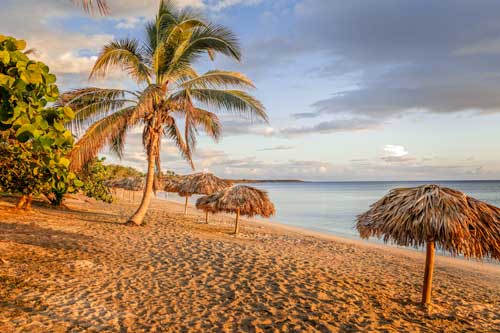

Ultimate Guide to Travel to Cuba (2024 Update)
Cuba is well known for its white sand beaches, delicious rum, and world-famous cigars… but you might be surprised learn just how much Cuba has to offer travelers. From incredible hiking destinations and wildlife preserves to fascinating historical sites and modern art galleries, Cuba is so much more than most visitors expect.
Unfortunately, there is a lot of confusion about who can travel to Cuba (hint: yes, Americans can travel to Cuba ! ) and how to travel to Cuba. Thankfully, Cuba travel is easy for just about anyone.
In this ultimate guide to travel to Cuba, we’re covering a ll the details about how to travel to Cuba, the best things to do in Cuba, and why you need to add Cuba to your travel bucket list .
Plus, keep reading for all the inside tips we’re sharing about what to pack for your trip, and what to leave at home.

This post contains affiliate links that may reward me monetarily or otherwise when you use them to make qualifying purchases – at no cost to you. As an Amazon Associate, I earn from qualifying purchases. For more information, please read our disclosure policy .
Cuba at a Glance
Who can travel to cuba.
Everyone can travel to Cuba! – even U.S. citizens or citizens of other countries traveling through the United States. U.S. citizens are required by the United States government to only spend money at private businesses (rather than government-run establishments) while there – which is quite easy to do.
Read More: Ultimate Guide to Travel to Cuba from the United States
Cuba uses the Cuban peso , valued at 24 pesos to $1 USD . However, since 2021 Cuba has been experiencing high inflation, and the official exchange rate is much lower than the one you’ll find if you exchange your money with a moneychanger.
Read More: Currency in Cuba: Ultimate Guide to Changing and Using the Cuban Peso
Spanish is the only language spoken in Cuba, with English occasionally spoken in the tourism industry . Download Google Translate before your trip to help. Check out our guide to the apps you’ll need for travel in Cuba for more recommendations.
Cuba is known for being an extremely safe country , much safer than most other places in Latin America or the Caribbean.
Take precautions that would generally when traveling – don’t be excessively flashy with jewelry, hold on to your stuff well in crowded areas, etc. You can find more Tips for Visiting Cuba like these from a fellow traveler here.
Electricity
Some areas of Cuba use 110V electricity while others use 220V electricity , and you’ll find a mix of plug types in different places around the island. We recommend bringing along a universal travel adapter and electrical converter so you can use your devices while there.
Internet in Cuba isn’t everywhere yet, but it is generally easy to access , although slower than you may be used to. We wrote a complete guide to using the internet in Cuba with all the details.
We recommend using a VPN (Virtual Private Network) when using the internet in Cuba. Check out our complete guide to using a VPN in Cuba for more details.
Required Insurance for Travelers
Cuba requires that all travelers show proof of travel insurance coverage upon arrival. We recommend Visitors Coverage for American and Canadian citizens and World Nomads for those of other nationalities.
Read More : Ultimate Guide to Cuba’s Travel Insurance Requirements
Our Most Popular Cuba Guides
- How to Legally Travel to Cuba from the United States (It’s Easy!)
- Ultimate Guide to Havana, Cuba
- Ultimate Guide to Varadero Beach, Cuba
- How to Get the Tourist Visa to Cuba
- Cuba’s Required Travel Insurance: What You Need and How to Get It
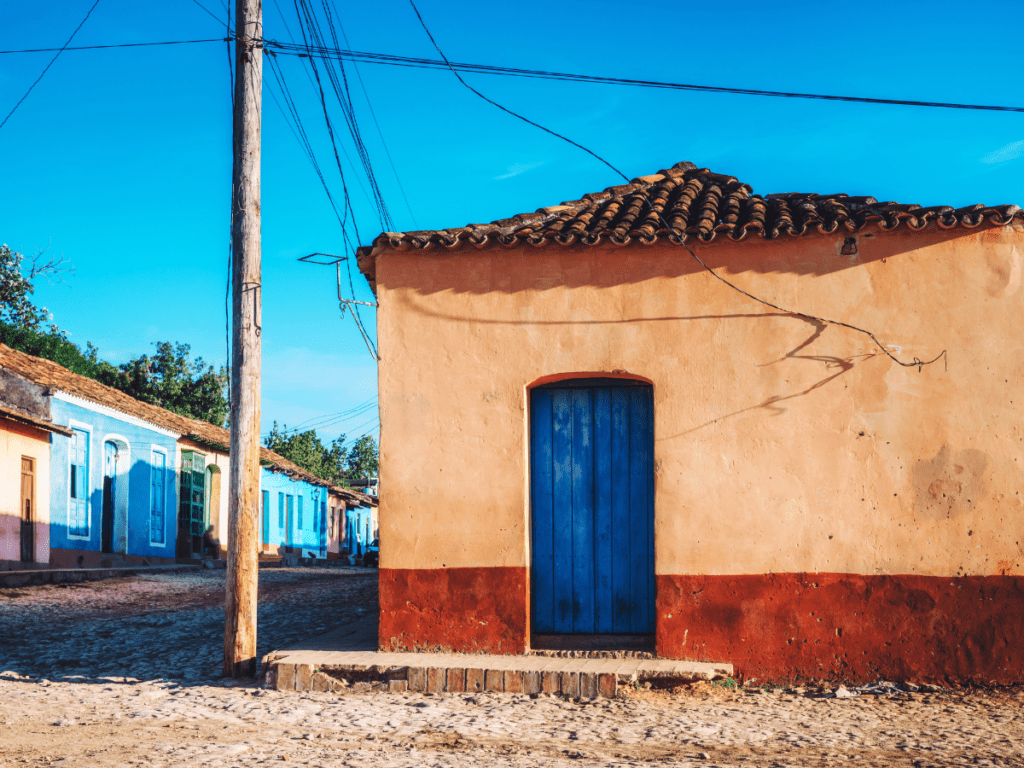
Weather in Cuba
A tropical country, Cuba has two seasons: the wet season and the dry season . The heat will generally dip slightly in the winter months (November through April) , but not much.
While the dry season generally attracts more tourists, the weather is perfect for a visit. May is a good time to visit as well, with the weather still nice and fewer tourists.
Dry Season: November – April
Wet Season: May – October
Don’t forget, Cuba occasionally experiences hurricanes . Peak hurricane season is from mid-August through mid-October.
Peak Tourist Season
Peak tourist season in Cuba lasts from early December through the end of March. Peak tourist season generally starts with a huge spike around the holiday season , when many Cubans living abroad come home to visit family.
Visiting around Christmas and New Year is when I’ve seen the greatest price increase in the price of flights and accommodations across the island – try to avoid these weeks if you can.
Best Things to Do in Cuba
Visit havana.
The craziest and most beautiful city in the world in our most humble opinion, Havana is like no other place on the planet.
Many say it’s stuck in the 1950s, but they couldn’t be more wrong – Havana holds on to its history beautifully while moving forward in a wholly modern way that will leave you enchanted.
Some of the best things to do in the city include exploring Old Havana , taking in the view over the city at the Cristo de la Habana , and ending the night with a drink and a show at the Fábrica de Arte Cubano .
Planning A Trip to Havana?
Check out our travel guides for insider information:
- Ultimate Travel Guide to Havana, Cuba
- Where to Stay in Havana
- The Best Airbnbs and Casa Particular Rentals in Old Havana
- The Best Airbnbs and Casa Particular Rentals in Vedado
- The Best Cafes in Havana and The Best Brunch in Havana
Visit Cuba’s Beaches
Cuba is known for having some of the world’s most beautiful beaches. Not only that, but many of them are as close to virgin, untouched beaches as you can still find in the Caribbean, which makes for an unmatched experience.
Check out our guide to the Top 10 Best Cuban Beaches to help you choose which to add to your itinerary.
The Beaches of Holguin
The province of Holguin is home to some of Cuba’s best beaches – Guardalavaca, Playa Pesquero, and Playa Esmeralda. Check out our ultimate guide to Holguin, Cuba for more details.
Varadero is the best-known beach in Cuba due to its proximity to Havana – it’s the perfect getaway from Havana for those looking to spend time in both the city and at the beach. If you’re picturing crystal clear waters and white sand , you’re thinking of Varadero.
While Varadero has a built-up infrastructure so you’ll have everything you’d want at your fingertips, there are also areas of Varadero where you can still get a slice of the beach all to yourself.
Read More: Ultimate Guide to Varadero, Cuba
Cayo Coco and Cayo Guillermo
This incredible pair of ‘cayos’ aka ‘keys’ located on the north shore of Cuba are served by their own international airport and have about a dozen large international hotel chains between them.
They’re some of the most underrated islands in the Caribbean .
If you’re looking for an all-inclusive beach experience, I recommend checking out these two keys and some of the incredible hotels they have to offer. The beaches here are truly pristine – some of the best beaches in Cuba .
Playa Ancón – Trinidad, Cuba
Playa Ancon is known as one of the most beautiful beaches on the southern part of the island, and is close to Trinidad, Cuba , an absolute colonial gem of a city that will take your breath away.
If you’re looking to get outside of Havana and Varadero track, which most travelers visit, we definitely recommend considering Trinidad and Playa Ancon!
Ride in A Classic American Car
The cars in Cuba are absolutely enchanting. While they’ve been kept on the road mostly out of necessity, it makes for a car-lover’s dream to see city streets packed with them.
A ride in a vintage convertible along Havana’s famous Malecón sea wall is a must while in Cuba.
Visit A Tobacco Farm in Viñales
Get up close and personal with one of Cuba’s most famous exports in Viñales , at the heart of the best tobacco-growing region in the country.
Here you can travel by horseback to beautiful tobacco farms where you’ll learn about how tobacco is grown, dried, and formed into world-famous cigars.
Viñales is also one of the most beautiful places in Cuba – this stunning valley is a UNESCO World Heritage Center . It’s an unforgettable way to see a stunning area of the country while this excursion!
What to Pack for Cuba
Check out our Ultimate Cuba Packing List to help you pack for your trip – we’re sharing exactly what to bring to Cuba and what we never travel without.
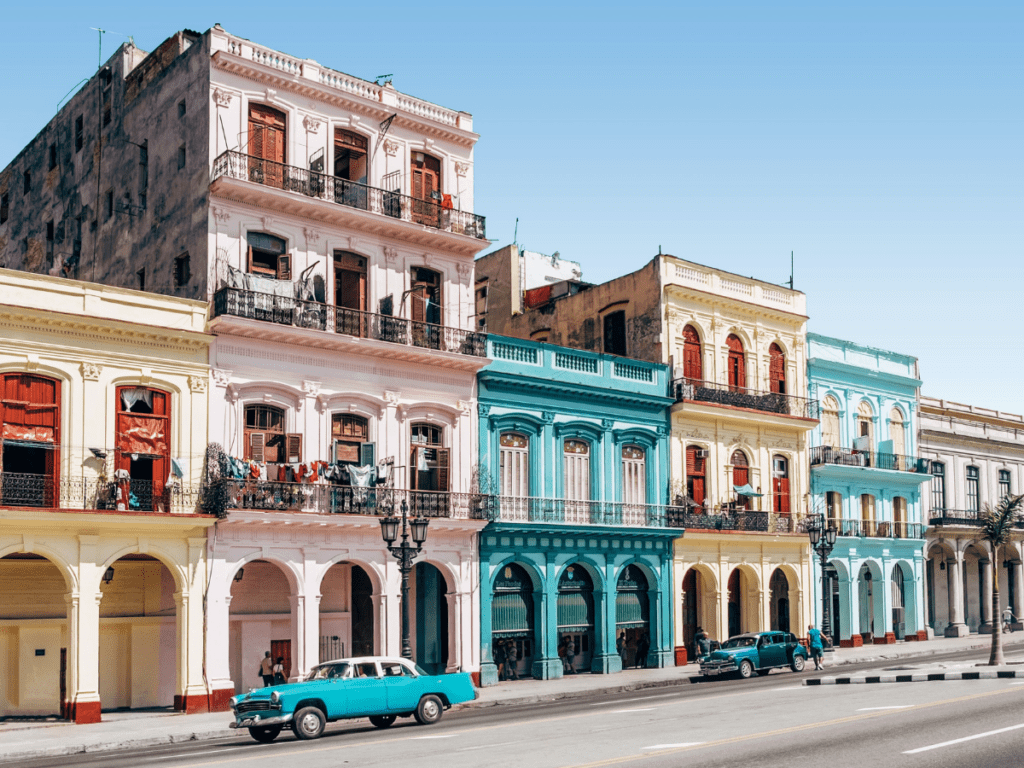
Learn About the Cuban Revolution
Cuba is so much more than the Cuban Revolution! The evidence of the revolution is everywhere, certainly, but there is so much more you’ll see and learn here as you meet the people, try the food, and see the art here in Cuba.
Make sure to visit these sites if you’re interested in learning more about the Cuban Revolution:
- Plaza de la Revolución in Havana
- Comandancia de la Plata in the Sierra Maestra mountains , the mountain base where Fidel and his band of revolutionaries launched their attacks
- Museo de la Revolución , a former presidential palace converted into the Museum of the Revolution in Havana. You’ll find American tanks captured in the attack on the Bay of Pigs behind the museum.
Learning more about the Revolution can be absolutely fascinating for visitors, and a great way to understand more of what you’re seeing and experiencing.
Make sure to check out this free walking tour in Havana focused on the Revolution as a fantastic way to learn more about what you’ll see in Cuba!
Want to learn more?
We made a list of a few books to read and movies to watch to inspire your travel and help you learn more about Cuba, past and present. Check them out before you go to learn more about the Cuban Revolution and much more.
- Books to Read Before You Travel to Cuba
- Movies to Watch Before You Travel to Cuba
Top Activities in Cuba
This list doesn’t even scratch the surface of what Cuba has to offer.
Make sure to check out our complete guide to the best travel experiences and activities in Cuba – totally travel-restriction compliant for travelers from the United States!
Where To Stay in Cuba
Casa particularles.
Casas Particulares – or, guest houses – are a fantastic option for staying in Cuba. You can find an amazing selection of rentals of all kinds, from luxury beach houses to staying with a family in a spare bedroom or renting a simple city apartment.
Not only do rentals usually get you a lot more for your money, but you’re supporting small business in Cuba and you’ll get a much richer cultural experience.
We’ve always had the best luck searching with, ironically, Hotels.com .
Despite their name, Hotels.com actually has a great selection of guest houses, private apartments, and Airbnbs for rent – with the best selection for Cuba!
Casa Particular Guides:
- Best Casas Particulares in Old Havana
- Best Casas Particulares in Vedado, Havana
- Best Casas Particulares in Viñales, Cuba
- Best Casas Particulares in Holguin, Cuba
Airbnb is one of the most popular platforms for finding rentals, but plenty of others exist as well and many people rent their listings across multiple platforms.
While we always recommend staying in a casa particular over a hotel, there are more and more amazing options in Cuba these days.
There are several new luxury hotels in Havana and in Cuba’s beach towns, but I recommend the boutique hotels like this one which can be just as luxurious and offer a more personalized stay.
All-Inclusive Resorts
There are many all inclusive resorts in Cuba, especially from companies like Iberostar and Melia , and they’re especially lovely ones located in Varadero and the Cayos – the Keys – on the northern coast of Cuba.
Cuba Accommodation Guides
- Where to Stay in Viñales, Cuba
- Where to Stay in Holguin, Cuba

Cuba can be a tough place to pack for – you’ll probably be combining time in the city, on the beach, or in the countryside.
Plus, there are a lot of things you just WON’T be able to find in Cuba no matter how hard you look, meaning you need to plan ahead!
We created an ultimate packing list for Cuba – so make sure to click through to this list to see all of our recommendations for packing (for men and women), plus important travel essentials!
Cuba Travel Essentials
- CASH – if you’re a U.S. citizen, you won’t have access to debit or credit cards while in Cuba . Check out our guide to traveling with cash in Cuba for more details.
- SteriPen – purify water from any source so you won’t get sick!
- Water Bottle (with water filter!)
- S-Biner locks for backpacks and purses while out and about
- Luggage locks
- Comfortable and lightweight basics – I love Los Angeles Apparel clothes for travel, especially to Cuba. These high-quality basics are perfect for layering, and mixing and matching for traveling light (PLUS they’re ethically produced in the United States).
- Go Toobs are the BEST for bringing toiletries.
- Make a mini first-aid kit with a few bandaids, aspirin, triple antibiotic, and alka seltzer just in case!
- Reef-safe sunscreen
- Light clothing that will keep you cool in the sun
- Comfortable shoes – get ready for a lot of cobblestones and uneven sidewalks
- Feminine Hygiene Products- I have NEVER been able to find tampons in Cuba – and the period products I have had to purchase there are incomparably bad. Absolutely come prepared, ladies!
- A electrical plug adapter and converter
- A tablet (we love the Amazon Fire !) pre-download some audiobooks and any TV shows or movies you’ll want to watch while you’re in Cuba… internet speeds in Cuba will make downloads slower than you’re used to or impossible.
- A spare memory card for your camera – also something that can be extremely challenging to find in Cuba!
- NordVPN or another Virtual Private Network service . Not a physical product, but something you shouldn’t travel without! Check out our guide to using a VPN in Cuba , and our guide to using a VPN for international travel .

Carley Rojas Avila
Carley Rojas Avila is a bilingual travel writer, editor, content marketer, and the founder of the digital travel publications Home to Havana and Explorers Away. She is a serial expat and traveler, having visited 40+ countries and counting. Carley has written for publications like Travel + Leisure, MSN, Associated Press, Weather Channel, Wealth of Geeks, and more. Find her front row at a Bad Bunny concert, befriending street cats, and taste-testing every pizza in Havana.

Cuba Travel Tips: 58 Things You Need to Know Before Traveling to Cuba (2023)
Traveling to Cuba? You probably already realized there’s a distinct lack of solid, practical Cuba travel tips for first-time visitors. Worse, the information may not be accurate at all in 2023!
Figuring out things like the Cuban currency, how to save money, what to pack, how to dress, how to access the Internet, or even how to stay safe and healthy can be confusing! This can be especially difficult for Americans since visiting Cuba was strictly forbidden for many years.
Until now! We’ve compiled the most complete list of things to know before traveling to Cuba, and they all work in 2023! We also cover the latest Cuba travel restrictions concerning the COVID-19 pandemic. Absolutely everything you must know.
Travel planning tips for Cuba
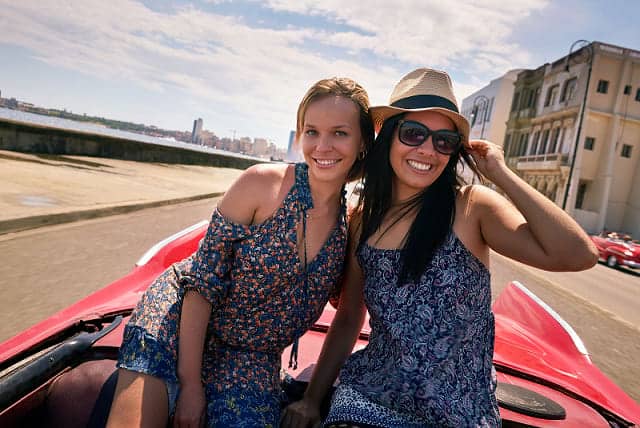
1. Travel in the dry season (November to April)
Although the beaches in Cuba remain absolutely beautiful at any time of the year, the rainy season in Cuba (May to October) can bring hotter and more humid weather. The tail end of the rainy season is also well-known for hurricanes and lots of mosquitoes!
Therefore, if the weather is a big priority for you, the best time to go to Cuba is the dry season.
2. Get the Cuban Tourist Card
Travelers from most countries will need a Cuba Tourist Card or Cuba Visa to enter the country.
Cuban Tourist Cards come in two colors: pink and green. If you travel directly from the U.S. to Cuba, you’ll need a pink Cuban Tourist Card. Otherwise, get a green Tourist Card.
You can get the Cuban Tourist Card online (through sites like EasyTouristCard) , from your airline or travel agency, or at your country’s Cuban Embassy. Technically, you can also buy the Tourist Card at Cuban airports for about 25 USD, but the reality is that you can’t even board your flight if you don’t have it.
3. Get travel health insurance
Travel health insurance is an entry requirement for Cuba , so you can’t skip it. Visitors to Cuba are required to have travel insurance to cover medical expenses on the island. Companies like Insubuy offer travel health insurance for Cuba starting at 8 USD per week per person.
Before you land in Cuba, review the medical portions of your insurance plan, so you know exactly what situations you’re covered for during your trip. If an emergency strikes, the last thing you want to do is have to shuffle through your insurance paperwork.
4. Bring the essential packing list for Cuba. Packing tips for Cuba
There are certain things you don’t want to travel to Cuba without.
With Cuba’s rationed economy, supplies are limited on the island. So, you may be unable to pick up some of your travel necessities if you forget to pack them in your bag. Double check this list to make sure your bags are ready to go before you board your flight!
- First aid kit
- Hand sanitizer
- Convenience kit
- Water bottle with filter
- Microfiber towels
- Mosquito repellent
- Portable charger
- Pin adapter (for Europeans)
- Travel guide
- Spanish-English phrasebook
For a full rundown of what you need to bring to Cuba, check out our ultimate packing guide for Cuba .
5. Bring appropriate clothes to Cuba. Dressing tips for Cuba
Dressing for Cuba will vary based on your style. Still, two things to consider are the weather and the kinds of activities you’d like to do while in Cuba.
Cuba has two seasons: the wet season (May – October) and the dry season (November – April). The wet season brings lots of rain, humidity, and high temperatures, so dress accordingly!
Here are recommended clothes for the hot, humid weather in Cuba:
For a woman traveling to Cuba:
- Light summer dresses
- Walking sandals
For male travelers to Cuba:
6. Rent your car in advance
If you stay a few days in a city, you won’t want to get into the hassle of renting a car in Cuba . Believe me, it can be complicated.
However, if you want to rent a car to visit all the fantastic places on the island, you better do it in advance. Car inventory is always limited, fleet management is inefficient, and the service is terrible. This is especially true during peak season.
Therefore, at least three months in advance, rent your car from online travel agencies like Cuba Travel Network , or Holiplus .
7. Fill out the health and customs forms online
Instead of borrowing pens, filing out annoying forms, and wasting your precious time in the airport, sign up for D’Viajeros .
D’Viajeros is the official website of the Cuban Customs, where you can complete all the required documentation to enter Cuba. Then, just print the documents and bring them with you.
8. Brace for arrival
There are a few things that you need to know about airports in Cuba:
- They are pretty disorganized: long lines, poorly-maintained bathrooms, and hot!
- There are certain items that you cannot take through customs. Check the Cuban Customs website for more details.
- If you want to exchange your home currency for Cuban Pesos (CUP) at the airport, prepare for a long line.
- Don’t count on ATMs! There are a few, but they are not reliable.
- You can connect to WiFi at 25 CUP/hour.
- Outside the airport, you can hire state or private taxis for transfers to the city. There are also car rental offices in most Cuban airports.
To learn more about arriving at Cuban airports, read our guide to Havana Airport .
Cuban currency tips
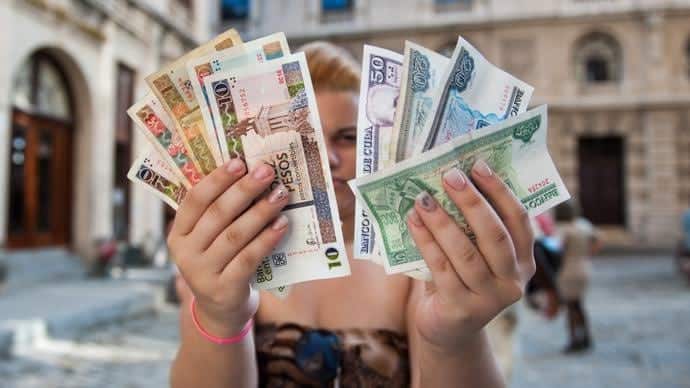
9. Understand the Cuban currency
Two official Cuban currencies circulated on the island until January 2021: the CUC (Cuban Convertible Peso) and the CUP (Cuban Peso). Contrary to what many outdated articles say, you can no longer use the CUC in Cuba! You must use the CUP instead (also known as “moneda nacional” or MN), which is accepted at most facilities and tourist attractions.
However, you must consider that all-inclusive hotels and some resorts won’t accept cash for non-covered services or products. They will still charge you in Cuban Pesos, but you must pay with your credit card and assume the currency conversion fees.
The CUP is available in bills of 1, 3, 5, 10, 20, 50, 100, 200, 500, and 1000. You should always have bills in lower denominations to pay for:
- Street vendors and food stalls
- Bus tickets
- Purchases at a flea market
- Purchases made at small local bodegas and convenience marts
Remember that the US dollar and other foreign currencies are not accepted at state facilities such as hotels, airports, and restaurants. You will have to use CUP to pay for products and services from these state facilities. However, most private businesses in Cuba welcome hard currencies.
You can exchange your currency for CUP at state currency exchange offices (CADECA) , airports, banks, hotels, and resorts.
For more Cuba travel tips related to Cuba’s currency system, check out this Ultimate Guide for Travelers .
10. Bring cash to Cuba, a lot
You can pay for all things in Cuba in cash. In fact, just a few businesses accept credit and debit cards, so you should always carry cash.
Due to US restrictions, credit cards issued by U.S. banks are not accepted in Cuba.
If you need to re-stock up on cash during your visit, Cuba has about 780 ATMs. They are mostly located in larger cities like Havana , Matanzas (Varadero), Santiago de Cuba, and Holguin. Again, credit cards issued by American banks won’t work.
11. Don’t count on bringing Cuban Pesos
The Cuban Peso (CUP) is the official currency in Cuba. You can’t get it in advance! And if you do, you can import only 2,000 CUP, which is like 80 USD. It’s better to wait until you land on the island to exchange.
12. Bring Euros if you can, but USD dollars are fine
If it’s not a hassle for you, bring Euros to Cuba. Euros have one of the highest exchange rates in Cuba and are widely accepted. They also incur the lowest exchange rate fee of 2%.
You can also bring US dollars and sell them to CADECA or in the informal market. Just consider that US dollars may not be accepted at some state-owned facilities in Cuba, and they will incur the highest exchange fee (8%).
How much money to bring to Cuba?

13. Calculate the approximate daily budget
Cuba can be quite affordable if you plan correctly.
Before you arrive in the country, you should get a feel for major expenses like accommodations, transportation, and food & drink costs. Here are the most common expenses to incur on a trip to Cuba:
- Accommodation costs: “casas particulares” cost between 20-50 USD/night. Hotels and resorts cost anywhere between 100-500 USD/night.
- Transportation costs: private taxis cost around 1.50-3 USD/kilometer. The Viazul bus ticket costs anywhere from 6 USD to 51 USD, depending on your interprovincial route. Renting a car will cost around 85 USD/day.
- Food and drink costs: Vary quite a bit! Breakfast at your casa can cost anywhere between 5-12 USD, while a sit-down restaurant meal can range from 10-30 USD.
- Entertainment costs: A tour of Havana in a classic car costs around 50 USD. Tickets to a baseball game cost 3 USD/each. Some museums are free, and others can cost up to 10 USD.
For a full breakdown of a realistic daily budget, check out our guide on the trip to Cuba cost .
14. Tipping in Cuba: who and how
Like many destinations throughout the Caribbean, tipping is common and even encouraged in Cuba .
Popular tippling locations include hotels, resorts, restaurants, guided tours, taxis, and spas. Anytime someone provides a service for you, like cleaning your room, waiting for your table, or transporting you in a taxi, you should strongly consider offering a tip to that person–especially if they do an outstanding job!
We recommend at least 1-3 USD for maids, porters, receptionists, street musicians, and taxi drivers. Local guides generally expect 5-10 USD, while 10% of the bill is the gratuity standard at restaurants in Cuba.
Money-saving tips for Cuba
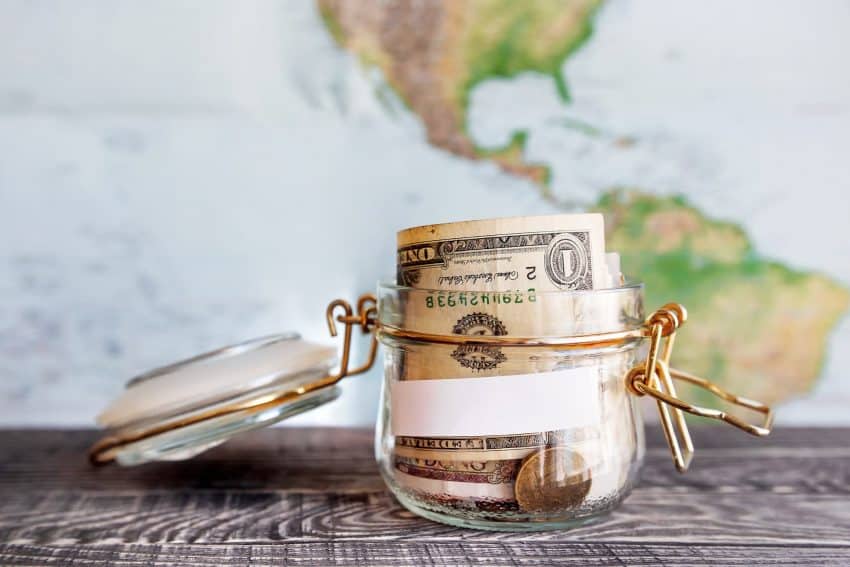
15. Stay in casas particulares (private accommodations)
This is a piece of Cuba travel advice you shouldn’t ignore!
Casas particulares are popular and highly authentic places to stay during your Cuba trip. A casa particular is similar to a bed-and-breakfast. Usually, it costs between 20-50 USD per night, making them much more affordable than resorts on the island. Check out availabilities!
For more on this, read our 13 tips to booking an Airbnb in Cuba .
Bonus tip: Be aware! You may be tempted to save money by staying at someone’s place for free. It’s illegal! Avoid trouble with the law and overpriced hotels by staying at a homey casa particular instead.
16. Book flights to Cuba with a flights search engine
Direct flights to Cuba–especially from the United States–are limited, and many airlines don’t fly to Cuba.
To book a flight to Cuba, it’s easiest to see ticket options from multiple airlines. You can check out a flight search engine like Skyscanner that covers flights to Cuba.
17. Eat at paladares (private restaurants)
Cuba has a growing restaurant scene where you can find everything from gourmet meals to comfort food.
Paladares are private restaurants typically owned by families. Paladares are an excellent way to get authentic Cuban food at an affordable price.
Cuba travel guides like this one from Lonely Planet often have lists of paladares you can choose from. It also includes culinary facts about Cuba and advice for its best restaurants.
18. Share urban taxis in Cuba
Cuba’s taxis are a convenient and authentic way to get around the cities, especially if you are on a backpacking adventure . Plus, Cuba’s almendrones (classic American cars) are world-famous and unique to the island.
Although it may be a little uncomfortable, sharing an urban taxi for short rides is a cheap and authentic way to experience Cuban.
19. Book the tours to Cuba before you leave
Guided tours offer an unparalleled, authentic experience of Cuba.
From walking tours of history-rich cities like Havana to hiking or horseback riding in the stunning countryside, an experienced guide can show you parts of Cuba that you’d miss out on if you traveled solo.
Tours can book up fast, so plan the itinerary and book your tour in advance . Plus, tour guides are experts in Cuban traditions and culture , so they’ll have tons of more helpful Cuba travel tips!
Cuba Travel Restrictions During COVID-19
20. no need to bring proof of covid-19 vaccination or a negative pcr test.
As of April 4th, 2022, you are not required to present proof of vaccination against COVID-19 or a negative PCR test at arrival. For a full rundown of COVID-related restrictions, check our guide to the current set of Cuba travel restrictions .
21. Fill out the Sanitary Statement for Travelers
If you didn’t complete the online documentation with D’Viajeros, as explained earlier, you would need to fill out the Sanitary Statement for Travelers ( Declaración de Sanidad del Viajero ), a sort of health declaration form. You will be asked to complete the form before checking in for your flight to Cuba or during the flight.
22. There are restrictions on facilities, attractions, and mobility
Like any other country struck by the COVID-19 pandemic, Cuba has imposed tight internal restrictions that may affect your stay on the island, specifically:
- Social distancing (5 ft) and face masks may be required at some establishments.
- You may be subject to contact tracing or random temperature checks.
- There is limited capacity and operating hours at most tourist facilities.
- Large gatherings are not allowed.
- Travel within and between cities and provinces may be restricted.
23. Avoid the fines for non-compliance
You read that right. You may be fined and even prosecuted if you violate the above measures. However, honestly, that would be very rare for international travelers.
Tips to avoid getting sick in Cuba
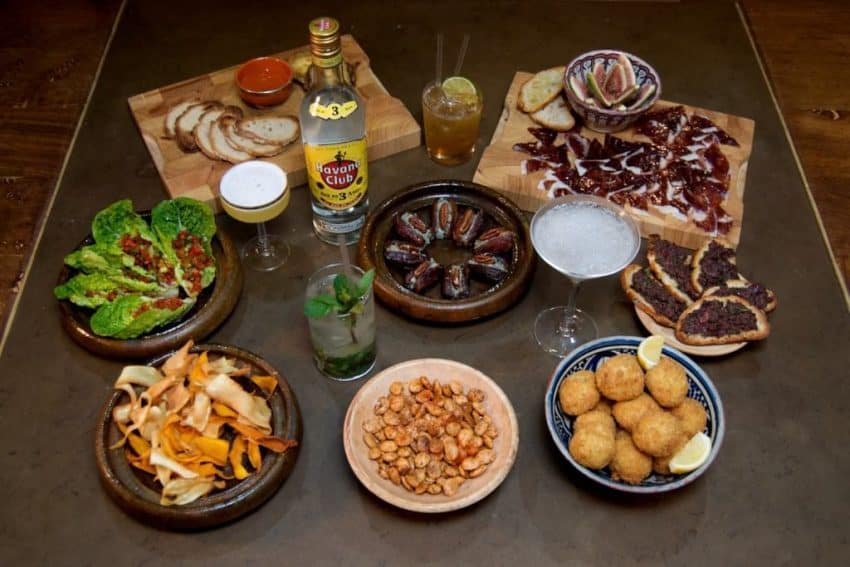

24. Bring your medications
Cuba’s physicians have a good worldwide reputation. However, you should still be prepared for minor illnesses or injuries that don’t necessarily warrant a hospital visit.
Pack an all-purpose First Aid kit with all the necessities like bandages, aspirin, and bismuth.
25. Don’t drink tap water in Cuba
We don’t recommend drinking tap water in Cuba!
Cuba’s water supply is home to its unique bacteria and microorganisms. The bacteria itself isn’t dangerous per se, but your body isn’t used to it, and it can make you very ill. Nausea, cramps, upset stomach, and other gastrointestinal issues that could wreck your trip are common.
Using water bottles with built-in filters is an easy way to keep your water clean and safe to drink during your stay.
26. Don’t buy street food
Cuba is home to delicious local food, but buying food from a street stall or vendor can make you sick. Street stalls are simple set-ups and don’t have the luxury of refrigeration and sanitation that restaurants have.
If you fancy yourself a dare-devil and indulge in street food anyway, you should be extremely careful about what kind of fish you eat. Certain local fish from Cuba’s southern shore can be poisonous ( siguato ) because they eat toxic sea vegetation.
27. Eat at the recommended restaurants in Cuba
Since food from street vendors can be iffy, you should instead eat at one of Cuba’s many private restaurants, referred to on the island as paladares .
Cuba travel guides like this one from Lonely Planet often have lists of paladares you can choose from. It also offers tons of Cuba travel tips for getting the best of Cuba’s culinary scene.
28. Take basic food safety precautions
You can avoid many potential illnesses in Cuba by exercising basic safety precautions regarding food, sanitation, and hygiene.
For example, washing your hands before meals will help eliminate harmful bacteria. When it comes to food, you should avoid eating anything raw or undercooked and forgo consuming unpasteurized dairy products. Washing and peeling your fruits and veggies also helps eliminate harmful germs.
29. Protect against mosquitoes in Cuba
You’ve probably heard of Zika or Dengue outbreaks in the media.
Cuba is a humid, tropical island home to lots and lots of mosquitoes –bugs are just one of those unfortunate facts about Cuba . And since Cuba is warm all year round, mosquitoes will be around no matter what time of year you visit.
The International Association of Medical Assistance to Travellers (IAMAT) recommends “taking meticulous anti-mosquito bite measures during the daytime. Pregnant travelers should seek counseling from a travel medicine practitioner and consider postponing travel to this country.”
Bring a potent insect repellant to keep away mosquitoes during your trip!
30. Write down the hospitals and physicians available
If you find yourself sick or injured in Cuba, you don’t want to be left scared and helpless because you don’t know who to turn to for help.
Did you know that the U.S. State Department put together a list of hospitals and physicians for all of Cuba’s major cities? Bookmark the list so you can use it as a quick reference if you or one of your travel companions needs medical attention.
Travel safety tips for Cuba
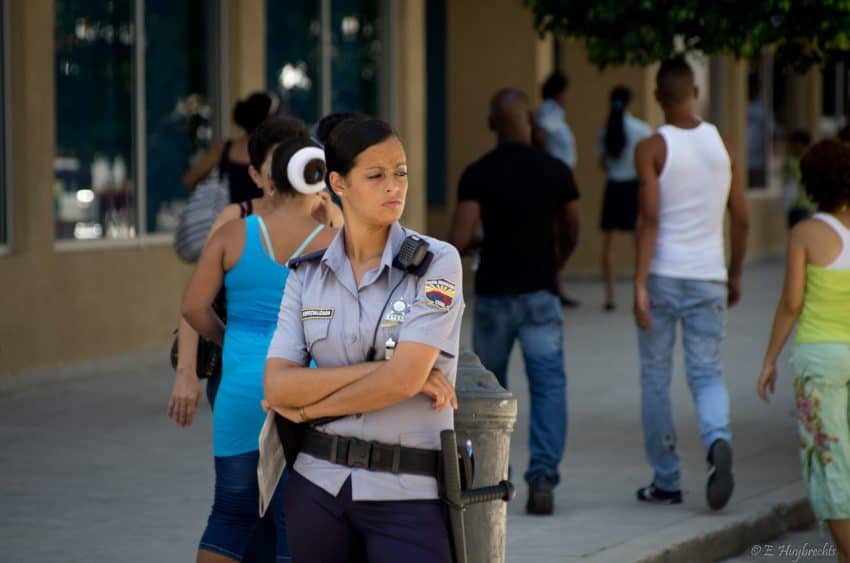
31. Get the emergency numbers
We don’t like to think about getting into emergencies while traveling, but the truth is, they can happen anytime. Write down these important phone numbers just in case of an emergency.
- Police: 106
- Fire Department: 105
- U.S. Embassy in Cuba: +53 7839-4100
- For Canadians traveling to Cuba , Canadian Embassy in Cuba: +53 7204-2516
32. Don’t exchange money with street vendors
Visitors to Cuba sometimes fall prey to currency scams. You should always exchange currencies at a legitimate location. CADECAs are located at hotels, airports, and banks.
Avoid exchanging money through informal means like street vendors. You might get the wrong amount of cashback or counterfeit money.
33. Don’t carry too much cash on you
It’s smart to carry cash on you while in Cuba, but it’s not smart to carry too much all at once. The more cash you have in your pocket, the more you could lose if you are pickpocketed.
Instead, carry what you need for the day and leave the rest in a safe place back in your room.
34. Avoid pickpockets
Cuba is one of the safest countries in the Caribbean to visit, but petty theft is commonplace. This is especially true in major tourist areas where thieves seek “easy” targets.
The best way to deter pickpockets and protect your valuables is with a money belt like this one from Peak Gear . A money belt is subtle, secure, and lightweight, so you can always keep your valuables hidden and close to you.
35. Don’t go to impoverished neighborhoods
Like any other country you visit, some parts of Cuba are safer than others.
Poor neighborhoods, especially in large cities like Havana, could be dangerous to tourists due to muggers and robbers. In Havana, certain neighborhoods in Centro Habana, Marianao, and Guanabacoa are especially dangerous. You should only consider going if you have a knowledgeable, trustworthy local friend.
If it helps, you should consider carrying a travel whistle like this NOOPEL Emergency Whistle.
36. Don’t show off
There’s something about vacation that sometimes makes people want to show off, but Cuba is not the place to do that.
Showing off symbols of wealth or status like luxury clothes, bags, watches, or expensive electronic devices, can attract the wrong kind of attention and mark you as a target for thieves or muggers.
Instead, keep your valuables home and bring only what’s practical and comfortable for your trip.
37. Hire only professional Cuban guides
Cuba is full of guides willing to take you on tours of the cities and beyond, but only some of them are legitimate.
Instead of hiring someone on the street, stick to reputable guides. Hiring the wrong guide can be a waste of money and potentially dangerous.
38. Lock your luggage
Locking your luggage can make the difference between keeping your stuff safe while traveling and having it stolen.
Although Cuba is a safe country to visit, it’s not unheard of for things to go missing from unattended bags. Keep your things safe with a TSA lock like this one .
39. Use your common sense
Cuba is a safe country with relatively low crime rates. That said, you should exercise common sense when traveling throughout the country to protect yourself from trouble.
Avoid walking alone at night, and don’t invite strangers back to your room. These are just a few Cuba safety tips you can learn from the Ultimate Guide to Stay Safe in Cuba .
Transportation tips for Cuba
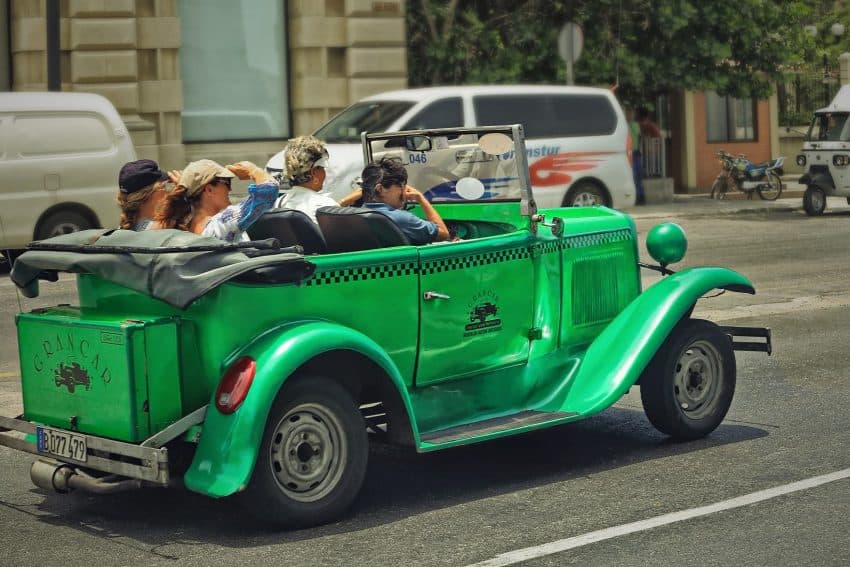
40. Plan your local transportation in advance
Cuba has a variety of transportation options for getting around the island. Your choice will depend on your budget and the distance you want to travel.
Taxis (state taxis or almendrones) are the most affordable option for getting around within a city or between two nearby cities. You can rent a car, but be aware that daily fees are pricey and road conditions in Cuba mean they’re not always safe to drive on.
For longer trips between cities or other parts of the island, you can take the Viazul bus . If your trip is longer than you’re comfortable traveling by bus, you can skip the Viazul and book a domestic flight across the island.
41. Get a street map of Cuba
You’ll probably spend a lot of time traveling on foot. With Cuba’s year-round warm weather and the beautiful old architecture of its cities, you’d be missing out if you didn’t hit the pavement.
For getting around Cuba on foot, a paper street map will be your best friend. Internet access in Cuba is spotty, so don’t assume you’ll have access to Google Maps or Apple Maps on your phone.
How to get Internet access in Cuba?
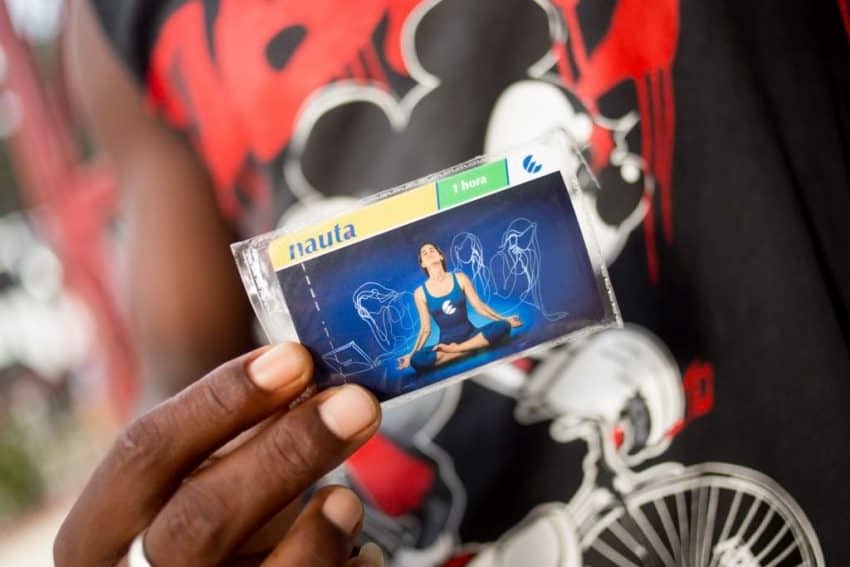
42. Don’t expect easy Internet access in Cuba
Cuba does have internet, but access is limited, and service isn’t available everywhere. The only Internet provider in Cuba is Empresa de Telecomunicaciones de Cuba (ETECSA). The best spots to find reliable internet access are hotels, airports, and public hotspots in the biggest cities.
Once you get connected, don’t expect lightning-fast speeds. Bandwidth is limited, so you should be fine making basic web searches and sending emails, but don’t expect to stream music and videos.
To know more about getting access to the Internet in Cuba, check out our detailed guide to get Internet in Cuba for tourists .
43. Know your options
You’ve got some options for connecting to the Web in Cuba.
A. Buy a NAUTA card
You can purchase a NAUTA card at ETECSA offices, but be prepared to wait in a long line. Travelers have reported that the lines in Havana can take up to two hours!
Some hotels also sell NAUTA cards, so you may be able to skip the trip to the local ETECSA center. A 5-hour card costs 125 CUP, and a one-hour card costs 25 CUP. Note: bring your passport! You’ll need it to buy the card. Also, if you buy the card at ETECSA, you must pay in CUP.
While we don’t recommend this option, you can also purchase an internet access card on the black market. If you go this route, expect to pay an extremely inflated price!
Once you have your NAUTA card in hand, you can connect to the web at any of these places:
- Public wifi hotspots. Here is a list of all the WiFi hotspots in Cuba .
- Hotels and resorts
- Salas de Navegación: d esktop computers at ETECSA offices .
B. Hotel and resorts that offer free Internet
Some upscale hotels and resorts offer free WiFi and desktop computers with internet access. In this case, you don’t need a NAUTA card.
However, this isn’t a universal commodity for all hotels in Cuba. You’ll want to research the hotel beforehand if this is your choice. A site like Skyscanner lists many of the services and features each hotel has to offer.
C. Ask your host to share Nauta Hogar
Nauta Hogar offers Cuban homeowners WiFi access in their homes and public hotspots. They need to pay a monthly subscription, which is not free and very limited.
For a price, your host may be willing to share their username and password with you. With access to a Nauta Hogar account, you can connect in your room, public hotspots, and airports!
D. Get the Cubacel Tur SIM Card
The Cubacel Tur SIM Card is a temporary phone line for tourists that ETECSA offers. It lasts for 30 days. The minimum package starts at 25 USD, including 2.5 GB of data, 20 minutes of international and national calls, and 20 SMS.
You can get the Cubacel Tur SIM Card in advance from ETECSA’s authorized providers , or buy it once you land in Cuba at any of ETECSA’s offices.
E. Rent a SIM card from your host
Some casa owners may be able to rent you a SIM card with Internet access for a price.
F. Buy or rent a SIM card online
A few online companies also offer Cuba SIM cards you can purchase ahead of your trip. Cellomobile and OneSimCard are popular companies that allow you to purchase or rent a SIM card for Cuba.
Cellomobile prices: Incoming calls $2.19/minute; outgoing calls $2.19/minute; free incoming SMS text messages; outgoing SMS messages $0.49/each.
OneSimCard prices: Incoming calls $0.65/minute; outgoing calls $1.25/minute; free incoming SMS text messages.
G. International roaming
Some major cell carriers like AT&T offer roaming coverage in Cuba. You can get an idea of what calls, texts, and data in Cuba cost by checking out the plan here .
T-Mobile’s Global Plus 15GB Plan also covers cell service in Cuba. Verizon and Sprint also have coverage but no roaming packages for Cuba.
AT&T prices: $3.00/minute for calls; $0.50/text; $2.05/MB for data
T-Mobile prices: $2.00/minute for calls; $0.50/text; $2.00/MB for data
Cuba travel tips for dealing with the ugly
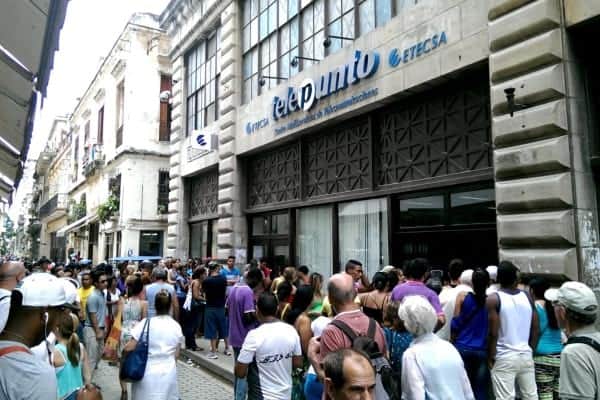
44. Be prepared for the long lines
Many goods and services on the island are still rationed and distributed via the state bureaucracy. Be prepared to wait in line at the bus stop, bodegas, banks, and cultural attractions like museums.
45. Many bathrooms are paperless
If you’ve spent a lot of time in North America or Europe, you probably take toilet paper for granted.
Many bathrooms in Cuba don’t have toilet paper or have toilet paper outside the stall near the washing basin. If you find toilet paper, there’s a chance it will be low-quality.
Instead of finding yourself S.O.L., you may prefer to bring a small supply of your own or a packet of travel kleenex when you’re out in town.
46. Don’t expect the entire menu to be available
Cuban restaurants are often working with limited ingredients depending on what’s available. This is mostly because the Cuban government still controls the availability of meat, vegetables, and other ingredients. This can impact the availability of certain meals and dishes on the menu.
47. Don’t expect high-quality service everywhere
Cuba is undergoing many changes, many of which you’ll notice during your stay on the island.
One of the most noticeable signs is the difference in the quality of service you’ll experience. While there are many outstanding businesses, restaurants, and hotels in Cuba, others may not meet what you’re used to experiencing in your home country.
48. Catcalling is common
Lady travelers to Cuba should know that catcalling (called piropo in Spanish) is common. Expect to hear lots of compliments like guapa , linda , and chula .
This is more likely to happen if you’re traveling as a solo female than in a group with males. Keep in mind that as annoying as the practice is, catcalling is typically harmless behavior and doesn’t lead to harassment or violence.
Respect and support the locals
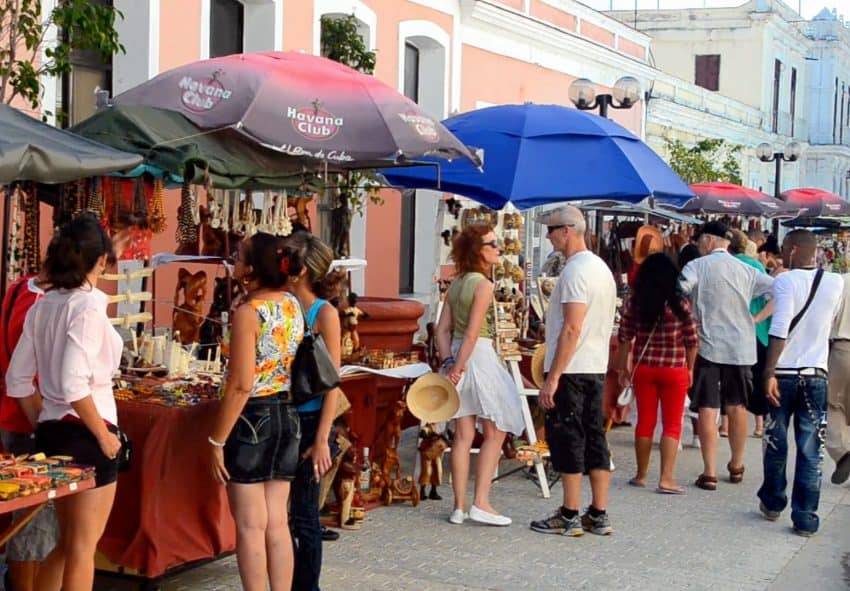
49. Learn some Spanish
Although some Cubans have conversational skills in foreign languages like English, it’s best to learn some Spanish to communicate in the local language.
Pack a Spanish-English phrasebook like this one that specializes in the Cuban dialect.
50. Avoid talking about politics
Politics is a passionate and complicated subject in Cuba. We recommend steering clear from politics while chatting with your new Cuban friends to keep the conversation light-hearted and pleasant.
51. Support Cuban local businesses
If you’re an American visitor traveling to Cuba under the Support for the Cuban People travel category , you’ll need to show that you’re supporting the Cuban people during your visit. Regardless of your travel designation, supporting local businesses is just a good thing to do!
A few popular ways visitors can support Cuban businesses include: staying in a casa particular; eat at paladares ; taking a dance class; and supporting local artists and musicians by attending their shows or purchasing their hand-crafted goods.
Airport tips
52. don’t bring huge amounts of cups to the airport.
CADECA offices in Cuban airports are no longer selling foreign currencies. Carefully plan your trip to Cuba budget , and don’t count on exchanging your leftover Cuban pesos back for your home currency.
If you end up with huge cash in CUP, exchange them in your hotel or at any CADECA office in the city. Don’t bring your leftover cash to the airport!
53. You can use mixed currencies in Cuban airports
Before the security check, you can spend only Cuban pesos. Past the security checkpoint, everything is in foreign currency only, but the change is in Cuban pesos!
Crazy, right? Well, don’t ask me!
Additional Cuba travel tips for Americans
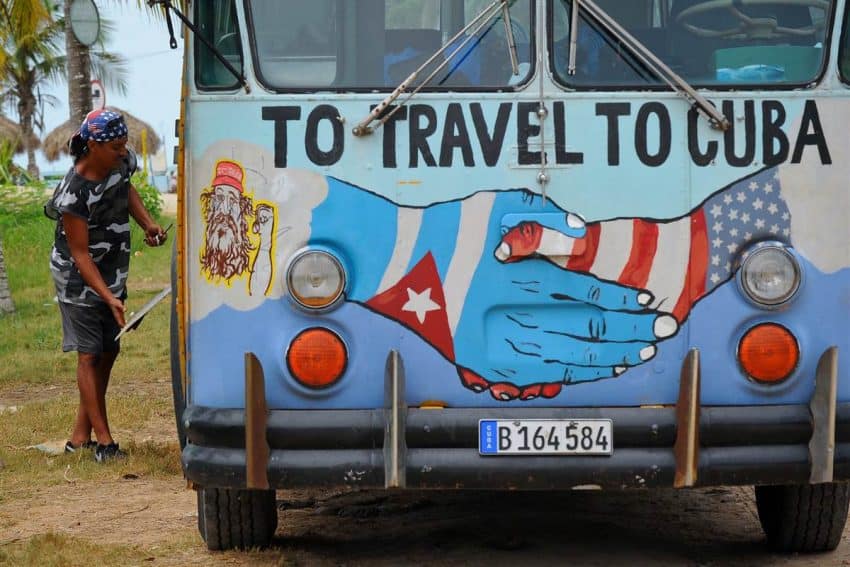
54. Make sure that your travel category covers your itinerary
Relations between the U.S. and Cuba have thawed significantly over the past decade. However, technically Americans traveling to Cuba for tourism is still illegal.
That said, you can still travel to Cuba from the US , and in fact, many Americans still visit Cuba each year. Among other things, you must declare your travels under one of twelve categories authorized by the U.S. Department of Treasury .
55. Don’t stay at the prohibited accommodations
Remember that you must not stay at any accommodation listed in the Cuba Prohibited Accommodations List . The list even includes some casas particulares !
56. Don’t spend money at restricted businesses
This is a heads-up for all American visitors to Cuba.
Due to lingering restrictions between the two countries, American visitors can’t spend money at Cuban businesses forbidden by the U.S. Department of Treasury. Any business affiliated with the Cuban military or security services is off-limits. You can view the full list here .
57. Keep your records
When possible, keep records of your travels, including accommodations, transportation, food, and miscellaneous purchases.
American travelers may be asked to provide documentation of their Cuban travels upon returning to the U.S. While anecdotally, this seems pretty rare, you should be prepared just in case it happens to you!
58. Don’t plan to bring back rum and cigars
You read that right! You can’t import Cuban-origin alcohol and tobacco products into the US , not even from third-party countries.
Buen viaje !
If this list had a #59, that’s what it would be! Armed with all the things you need to know before traveling to Cuba, you’ll be more prepared than ever for your trip. Now comes the fun part–packing and getting ready for your flight. Cuba awaits!
Have you been to Cuba before? Share your most helpful Cuba travel tips and advice in the comments below!
Share Article:
About the Author
Tour republic.
Tour Republic is a marketplace where you can discover, book, and review the very best experiences Cuba has to offer. We are a team of tourism professionals and journalists who have partnered with Cuban entrepreneurs to provide travel experiences that can transform your trip into a life-changing adventure. We also share our profound love for Cuba through in-depth travel guides, myth-busting articles, and captivating narratives. Whether you want to explore Cuba's wonders or understand its intricacies, our blog posts are your gateway to the heart of this extraordinary country.
Leave a Reply Cancel reply
33 comments.
What is the current travel advice? Am planning to visit this December ’23, but am reading about critical shortages and rationing of fuel and possibility of getting stranded travelling through the country. What is the best way to stay up to date with the current situation?
Can you take your own fishing Equipment with you and fish on the beach
Ladies carry toilet paper/tissue. Bathrooms are very clean but rarely provide it. Also be prepared to leave a tip.. 50-200cup to help out.
hey thee – I just got back from 8 days in Cuba. ONE AND DONE FOR ME. Supposed 4-star hotels on Expedia or other services would be below a Motel 6 standard here. Think road side rural Alabama cleanliness. If you want good Cuban food go to Miami. Chicken is malnourished, beef is like chewing on your shoe sole and most of the lobster was chewing on rubber bands.
Everything I’ve read is that 2 main items you cannot bring back to the states are Rum and Cigars. Guess what – it’s ALL tobacco and ALL alcohol. Going through Customs last night in Tampa the agent asked me if I had any fresh fruit, vegetables, food, tobacco or alcohol. I said I had 2 cans of beer.
I got pulled into a room, was given 3 sheets of paper to fill out. Name, address, passport number, SSN, email and phone. A different agent then went through my bag and asked me if I had permission to enter Cuba. I said yes, I finished all the paperwork. He said no – from the US DOJ? I said no….I spoke with the airline and they told me all I needed was a tourist card – same as this website. He said NOOOO. You need to get a license to travel from the USA to Cuba and that I can be fined up to $250,000 for not having the correct approvals and potentially I could have federal agents knock on my door.
Info here is partially correct but more and better research.
Hi RR, Thanks for sharing your experience! In most cases, you do not need an actual “license” or authorization to go to Cuba. The only two travel categories that need authorization from OFAC are “Professional research and professional meetings” and “Public performances, clinics, workshops, athletic and other competitions, and exhibitions”. If you travel under any of those categories, then yes, you need a permit from OFAC. Otherwise, there is no legal paperwork required. Everything is explained here .
Thank you for a great article. A bookmark for sure! I travel April 11 to April 20 to meet family for the second and first times! I’ve only met my Aunt in the US. First timer.
Question – thanks for the list of prohibited resorts. Are any allowed? I’d like to treat them to a vacation Seems like it would be harder for me to get access than them… Advise if possible? TIA
Great information tips , Thank you . I have a french passport and a valid Esta visa . Can I Fly from Miami Cuba and enter back to USA with the same ESTA visa .
Hi Joseph, Unfortunately, it appears that you will need to apply for a visa to re-enter the United States. Read more here .
Wow I love this article, so very helpful.. When you say Americans, it’s inclusive only of US Passport holders right? I’m Canadian and hold a Canadian passport, not sure if we also fall on some prohibitions that you had listed in this article? thank you
Hi Nicole, That’s right. US citizens are subject to tougher travel restrictions to Cuba. If you are traveling from Canada, check out our Cuba travel guide for Canadians .
Thanks for a helpful article. As this was updated early 2022…wondering if any insight to bringing back rum or cigars to US? The article link is from 2020. Thanks
Hi Rosalba, You still can’t bring Cuban cigars and rum back to the US.
Just came back from Cuba on 1/1/2023. Most points in the article is right. 1) USD is accepted everywhere cash is accepted. Rate 120-170 CUP to $1. 1 euro = 1 USD. Bring lots of cash (no way for Americans to get money in Cuba!!!). Exchange at a restaurant and you get the good rate. 2) most large stores do not accept cash, only non-US visa/ Mastercard. 2) Get the local SIM (1 year), 1000 CUP ($8.5) for new SIM and 3.5GB data. Add 500 CUP get you total 10.5GB data, should be enough for the trip. Do not buy the wifi card.3) book casa particular through Airbnb, paid in the US before going. Same for Viazul bus. 4) use your casa host to hire taxis or tours.
Hello, I was told Cuba was a very poor country and that bringing gifts such as toothpaste or headwear like caps, even kitchen tools are highly appreciated by the cooks and room service. Is this true?
Hi Nancy, Gitfs are welcome in Cuba. Please, read our guide to bringing gifts to Cuba . Thanks!
We’re going in next month mid-October and staying all inclusive in Valedaro – is there any tips for getting to Havana for the day? ideally we’d like to stay in a hotel for one night and have two days in Havana and then travel back
Thank you for this – and the related posts. GREAT detail, most helpful for trip-planning.
My daughter is travelling around Cuba at the moment (and loving it). But money (cash) has quickly become a serious issue. The official exchange rate at the bank is £1=26 pesos. The “unofficial” rate is £1=100 pesos – as apparently Cubans need foreign currency to be able to purchase certain items but cannot get hold of it officially themselves. She had planned on simply getting money from ATMs / banks but now realises that this will make everything four times as expensive. So the message is definitely pay for things in advance where you can and take as much cash with you as you think you will need. Don’t rely on local banks / ATMs. Euros and sterling in particular seem to be popular (I’m not sure about USD).
Those are great tips, Richard. Thanks for sharing! By the way, we wrote a whole guide to using money in Cuba here . Check it out!
Be sure to keep some local currency coins available at all times for public bathroom attendants. It is expected always!
Ohh dear!! – How can I experience the Wonders of Beautiful Cuba if it is this much trouble to get there (getting a pink Cuban tourist card) getting currency exchanged, finding a direct flight to Cuba from US, flights are limited, and many airlines don’t fly to Cuba?
Yes we want to “support the locals” and “local businesses” ….How, if its sooo difficult to get there?
What is wrong with the Cuban Government? Clearly they dont want tourists or our money??…. Poor Cubans – your great and detailed article has sort of soured our hopes to travel there??
Hi Mini, Yeah, Cuba is not your regular travel destination. It’s been challenging to get there since the beginning of the pandemic. However, the Cuban Government recently eased some travel restrictions, and the island is opening up for tourism again. To answer your answers: – Cuban Tourist Card: it’s not that complicated. Most of the time, airlines include it in the ticket price. For more, read our guide to the Cuban Tourist Card . – Cuban currency: definitely one of the most complex matters for travelers. You basically need to know that 1) you will need to use CUP (or “Moneda Nacional”) everywhere in Cuba; 2) US credit/debit cards are not accepted; 3) ATMs are scattered so bring some cash (Cuba is a cash country!); 4) tip in your home currency. Read our detailed article about the Cuban currency . – Flights from the US: actually, it’s the US Government who restricted flights to Cuba in 2019. The Cuban Government did limit flights due to the COVID-19 pandemic, but they are now allowing the usual number of regular flights. Hope this is helpful!
Good article. I haven’t been to Cuba in 21 years (sigh) Last time I was there, US dollars and baseballs were great tips. Much has changed in 21 years–my weight for one (LOL) Thanks for putting this together, As a Canadian I will be adding an extra layer of confusion by converting my tip money to Pounds. 1 Pound per night for Housekeeping? Or more?
Hi Dan, One Pound per night is enough. Thanks for your nice words!
This blog is really helpful. It is comprehensive, tackles all the essential travel in Cuba essentials, and it is very informative.
Hello. Can I bring into Cuba 83 CUC that is equal to almost 2000 CUP? I see on the customs website it says export of CUC in any amount is prohibited but says nothing about bringing in CUC? Can I exchange the CUC to CUP through official currency exchange or black market? Where do the locals exchange the CUC to CUP? Can I spend it at shops and then the shop owner exchange it? It must still have value until july? Thanks Paul
Hi Paul, Unfortunately, importing CUC into Cuba is also forbidden. Even you managed to get the CUCs into Cuba, it will be hard to get rid of them once you are in the country because almost no one wants CUCs anymore. You won’t be able to spend it at shops either because only Cuban residents enjoy the 6-months timeframe to exchange or spend the spare CUCs. Please, read our guide to the Cuban currency to understand the latest changes in the Cuban monetary system and how they impact you as a visitor.
Please be aware that as of 6 months ago there is no longer convertible pesos in cuba it is just pesos. ALSO FOR THOSE OF YOU WHO HAVE MEDICATIONS YOU NEED A DOCTOR NOTE SAYING THAT YOU ARE PRESCRIBED THIS TO BRING INTO CUBA ESPECIALLY PAIN MEDICATIONS AND HEART MEDICATIONS BLOOD PRESSURE ETC OR YOU WILL HAVE THE MILITARY AT THE AIRPORT SEIZING IT AS THEY TRIED WITH ME AND WIFE
Hi Tom, That is correct – as a traveler, you can no longer use CUC in Cuba. We are working on updating this article as we get more information about the reform of the Cuban monetary system. In the meantime, please read our updated guide to the Cuban currency , which covers the latest changes.
Hello all … I would like to send some money to my cuban friend during these hard times of The Covid19. He is not working because the hotel is closed however receives a bit of help from them. I sent 15cuc which was 25 CAD. Does 15cuc help?
Looking forward to all responses. TTFN 🙂
Hi Natalina,
Any help is appreciated, especially during this crisis. Please, learn more about the value of the Cuban currency and the exchange rate in our guide to the Cuban money .
Thanks for helping!
very helpful
You might also like

Cuban Currency: The Ultimate Guide for Travelers (2024 Update)
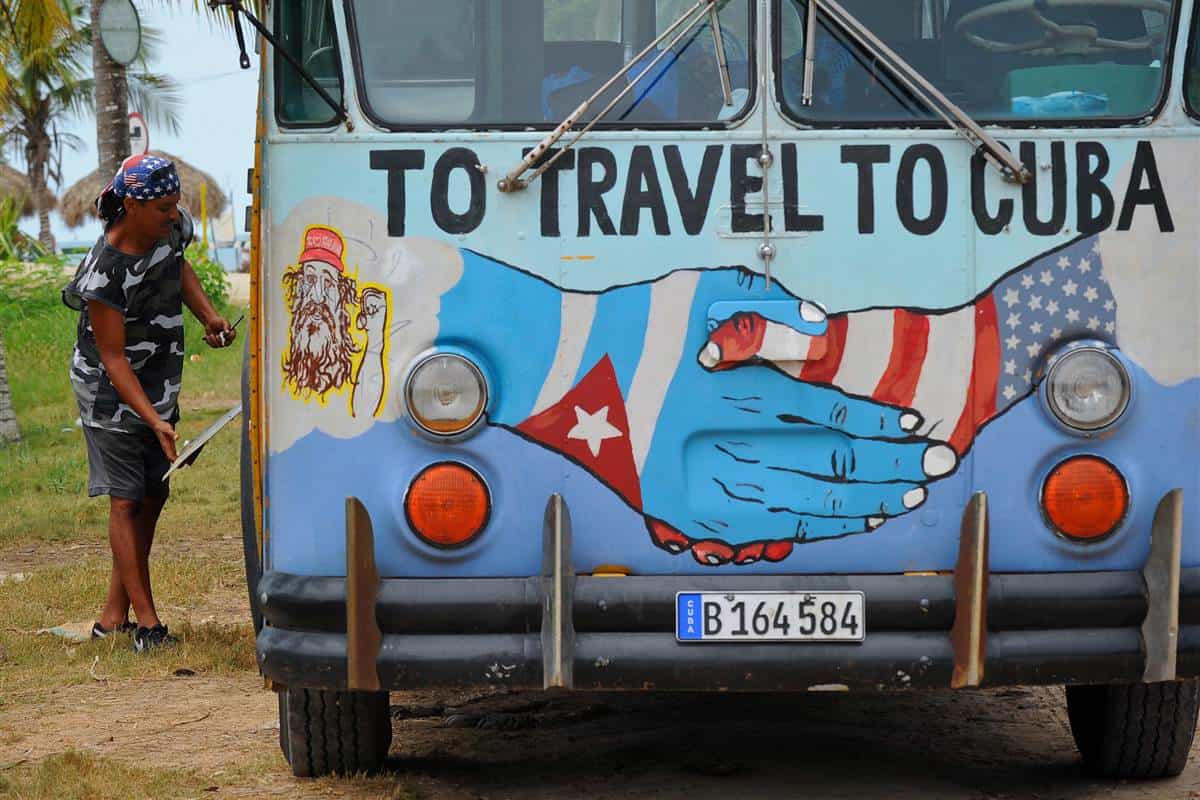
Beyond the Ban: A Guide to Americans Visiting Cuba in 2024.

Sand Fleas and Mosquitoes in Cuba: The Survival Guide (2024)
Other stories, how much does a trip to cuba cost a realistic travel budget (2023), generation y: unusual cuban names.

25 Best Cuba Travel Tips – Things to Know Before Visiting
- Updated on January 2, 2024
- Tips and Tricks

What You Will Learn (Click to Expand)
Introduction to traveling in cuba, the unique allure of cuba.
In a world that’s perpetually fast-paced and forever evolving, Cuba provides an intriguing break from the norm.
Occupying the throne as the largest island in the Caribbean sea (by land mass and population), it abounds with unparalleled charm – largely owing to its unique historical and political tapestry.
Quintessentially Cuban symbols like the vintage ’50s Cadillacs and rundown yet mesmerizing Spanish colonial architecture lend an irresistible allure to this island nation that paints the picture of a place frozen in time.
So here are my Top 25 Cuba Travel Tips.

1. Understanding The Local Culture
As with any travel destination, being respectful and understanding of the local culture in Cuba is key.
Cuban society is characterized by its warm hospitality, strong community bonds, and rhythmic vitality tied closely to music and dance.
Appreciating this rich cultural tapestry can make your trip a more rewarding and meaningful experience. It’s important to approach interactions with locals in a friendly and open-minded way.
From the enthusiastic dominoe games taking place on street corners to the animated discussions about baseball, the Cuban way of life is an immersive experience brimming with spirited conversations and engaging community culture.
Pre-Travel Essentials and Preparation
2. checking visa requirements ahead of your trip.

Traveling to Cuba requires travelers from many countries, including the US, to obtain a Cuban visa, also known as a tourist card.
This rule applies whether you’re entering the country as a tourist, on a business trip, or for family visits.
Visa requirements vary depending on your nationality. For instance, Canadians only need a tourist card typically provided by tour operators or airlines, whereas, for Americans, the situation is more complex due to certain US government restrictions.
Regardless of your nationality, it’s crucial to check and prepare for visa requirements well before your trip.
Use resources such as your local government website, your airline, or assistance websites to understand the specific visa requirements applicable to you.
Most travelers can usually purchase their Cuban visa at the check-in or departure gate of their flight to Cuba, although this process may vary.
It’s best to contact your nearest Cuban embassy if you need further clarification about Cuban visa requirements.
For visitors planning to stay up to two months in Cuba, a visa may not be necessary, but the specifics can depend considerably on your home country.
Always ensure you have a return or onward ticket, proof of sufficient funds to cover your stay, and documentation confirming your accommodation, especially if you are arriving with air-only tickets.
3. Packing Essentials for Cuba Travel

When you’re packing for a trip to Cuba, your list of essentials may differ from what you’d usually bring on other travels.
Given Cuba’s limited supplies due to its rationed economy, it’s vital to be prepared with items difficult to find or extremely expensive locally.
- First-Aid Kit: Packaging a compact but well-equipped kit with essentials like band-aids, antiseptic wipes, pain relievers, and any prescribed medication.
- Toiletries: While you should pack light, bring essentials like toothpaste, sunscreen, and insect repellent, as they can be expensive or hard to find.
- Portable Charger: Electricity is sometimes inconsistent in Cuba, so a portable charger can be a lifesaver for keeping your devices powered.
- Water Bottle With a Filter: Tap water may not always be safe to drink, so bring a refillable water bottle with a built-in filter.
- Food Items: Local stores may not have a wide variety of snacks, so bring any snack-related favorites or comfort foods from home.
- Misc Items: Remember to pack other necessities such as a Spanish-English phrasebook, travel guide, portable fan, microfiber towels, and a convenience kit.
- Adapters: For European travelers, don’t forget to pack a pin adapter, as Cuban power sockets accommodate US flat two or three-pin plugs.
Lastly, earplugs can be handy if dealing with street noise or lively local conversations during the night isn’t your idea of a peaceful vacation.
To sum it up, when it comes to packing for Cuba, it’s better to be over-prepared than under-prepared!
4. Must-Know Tips about Cuban Currency

One of the essential things to know when preparing for your Cuban adventure is understanding the currency situation.
The Cuban Peso (CUP) is the only currency currently in use in Cuba, with the Cuban Convertible Peso (CUC) being phased out as of January 2021.
As a predominantly cash-based economy, it’s important you always have cash on hand as very few establishments accept credit or debit cards.
Your cash should primarily be in smaller denominations for ease of transactions.
Although US dollars, Euros, and other foreign currencies are not generally accepted at state facilities such as hotels, airports, and restaurants, some private businesses do accept them.
So, to ensure a smooth experience, it’s best to exchange your currency for CUP at official currency exchange offices (CADECA), airports, banks, hotels, and resorts.
Remember that while Cuba is a safe country overall, as with any travel, sensible precautions to keep your cash secure are always recommended.
Also, note that ATMs can be sparse or non-functional in smaller townships and outside of standard banking hours at other locations, so it can be smart to withdraw enough cash early during your visit.
Finally, some all-inclusive hotels and resorts won’t accept cash for non-covered services or products. In such cases, you’ll need to pay with your credit card and take on the currency conversion fees.
Understanding the Cuban currency scenario and its associated challenges ahead of time can help ensure your journey is free from unnecessary financial stress.
Accommodation Tips For a Pleasant Stay
5. staying at locally-owned casas particulares.

Casas particulares, or private homes, are a unique and popular form of accommodation in Cuba, reminiscent of homestays or B&Bs.
This unique form of accommodation provides you with the phenomenal experience of living with local Cuban families, often in charming colonial houses, fostering direct interaction and cultural exchange.
Most casa particulares are authorized by the Cuban government, evidenced by a mandatory sticker with a blue anchor on their door. This indicates not only legitimacy but also safety for foreign visitors.
These establishments are owned and operated by private Cuban citizens who often live on the premises and are keen to make you feel as welcome as possible in their homes.
Staying in a casa particular offers the unique opportunity to observe Cuban life up close, including the chance to consume delicious home-cooked meals for an additional fee.
With both private and shared accommodation options available, casa particulares come in various sizes, from small 2-3 room establishments to larger ones with 5-7 rooms, catering to solo travelers, couples, and even larger family units.
As an alternative to the more conventional hotel experience, casa particulares are not only the best way to gain a more authentic Cuban experience but also go a long way in supporting local Cuban households directly.
Booking your initial casa particular online is suggested, with platforms like Airbnb offering many options.
However, for continued stays, you may get better rates by talking to the owners directly or using the network of your first casa particular host to find subsequent stays.
This not only allows for a more seamless trip, but you also get to interact more deeply with local families while supporting their businesses directly. A truly rewarding and culturally enriching experience indeed.
6. Pre-Booking Accommodation vs Spontaneous Booking
When considering whether to pre-book your accommodation or opt for on-the-spot booking upon arrival, both have their own advantages and considerations.
Cuba’s unique socio-political scenario and internet access restrictions can make online booking an appealing choice.
This ensures you have guaranteed accommodation waiting for you – a piece of information that might be necessary to show at airport customs upon arrival in Cuba.
However, the spontaneous approach offers its own charm. One-off, quirky casa particulares or last-minute deals at high-end resorts aren’t often listed online and require on-the-ground scouting.
Countless travelers have found hospitality and charm in stumbling across such hidden gems.
Additionally, casa particular owners usually own a network connecting various towns, which you can leverage to secure accommodations at your next destination.
This gives you a chance to discover local recommendations and enjoy an authentic Cuban experience.
Regardless of whether you choose advance booking or spontaneous exploration on arrival, ensure that the place is a legal rental by looking for the blue anchor sticker on the door authorizing it to house tourists and is, therefore, government-approved and safe.
In conclusion, you can use a hybrid approach to get the best of both worlds: pre-book accommodation for the first few nights of your stay or in high-demand areas and leave the rest of the trip open for spontaneous bookings based on local recommendations.
The experience can be more enriching, and who knows, you might end up discovering some of the best-kept secrets of Cuba.
Keep in mind that being flexible, having a healthy sense of adventure, and a basic proficiency in Spanish can make this process a lot smoother.
7. Safety Considerations for Your Stay

While Cuba is considered among the safest countries in Latin America for tourists, being alert and mindful of local conditions is crucial.
- Always secure your personal belongings. Cases of theft, pickpocketing, and purse snatching occur mainly in Old Havana, Trinidad, Santiago de Cuba, and Baracoa. Pay close attention to your belongings at all times, particularly in crowded areas and when using local public transport.
- Avoid isolated areas, especially at night. Stick to well-lit and populated areas, particularly if you’re a solo traveler or a woman traveling alone. As a general rule of thumb, never accept invitations to visit homes or remote areas unless they are licensed businesses (like casa particular or paladare).
- Fraudulent transactions are worth watching for. Be vigilant with currency exchanges on the street, which can sometimes involve counterfeit bills or confusing the two local currencies.
- The national resort areas of Cuba, such as Cayo Coco, Cayo Largo del Sur, Cayo Santa Maria, Guardalavaca, and Varadero, are generally safe and tend to experience fewer instances of crime. However, this should not lead to complacency on the part of travelers.
- Follow local news and stay updated with governmental travel advisories, as situations can change swiftly.
- Healthcare services may not be up to the standard you are used to. Thus, it is advisable to pack a comprehensive travel health kit and get health insurance that covers medical evacuation.
It’s important to note that personal safety is a subjective matter and can vary greatly based on individual experiences and circumstances.
However, by taking caution and employing common sense alongside these general-key safety guidelines, you can ensure that your experience of Cuba is both safe and enchantingly memorable.
Navigating through Cuba
8. utilizing shared taxis for smooth travel.

One highlight of Cuba’s transportation system is its fleet of shared taxis or colectivos – a convenient, cost-effective, and remarkably authentic way of getting around Cuban cities.
Colectivos are often classic American cars from the 50s and 60s, adding a nostalgic charm to your travel experience.
They generally have a fixed route and are shared with other patrons, creating a vibrant ride filled with local conversations – a unique way to absorb Cuba’s upbeat spirit.
Despite the inherent old-world charm, do note that these vehicles often lack modern comfort features, making long journeys a bit uncomfortable.
However, for shorter trips around the city, they are an authentic and economical choice.
Bookings can be made on the street or through your casa particular. It’s customary to negotiate the fare before you start your ride because the first quote usually starts high. However, remember that while negotiating is a part of the Cuban culture, a fair price isn’t always the cheapest one.
A typical colectivo trip is quite efficient as Cuban highways aren’t very congested.
They offer point-to-point convenience, picking you up from your casa particular (or a designated common point) and dropping you off at your destination.
While shared taxis may appear confusing to first-time travelers, they’re a remarkable blend of convenience, practicality, and cultural immersion, making them one of the best ways to travel around Cuba.
These taxis play a significant role in shaping your authentic Cuban experience.
Remember: Colectivos are just one of the many options to commute in Cuba. Evaluate your preferences, timings, and comfort levels to choose the best commuting option for you.
Regardless of your choice, colectivos surely add a charmingly Cuban flavor to your commute experiences in Cuba.
If you like exploring, here is a Complete List of the Best Beaches in Cuba .
9. Deciphering the complex Bus Routes in Cuba

Traversing Cuba by bus is an economical and practical way to experience the country.
Viazul, Cuba’s state-run intercity bus service, is the most reliable and widely used by foreigners for its comparatively comfortable and clean buses, albeit slower due to frequent stops.
The Viazul website provides detailed information about their bus routes, time schedules, and fares for planning your trip.
Make sure to note down all the details as the website may be inaccessible during your trip due to spotty internet access throughout Cuba.
Viazul bus tickets must be purchased at the bus station a couple of days in advance, which might take up a chunk of your time as the queues are long and slow-moving.
Booking in advance is crucial as buses tend to sell out quickly, especially during the peak season.
There’s an option of a second bus service, called Conectando, run by Cubanacán, that also operates along popular routes during the peak season.
Bus journeys in Cuba can be long, and the air-conditioning is notoriously cold, so it’s smart to bring a sweater or jacket.
Another thing to be prepared for is the likelihood of people approaching you with various offers, especially if you are traveling solo.
Understanding local bus routes in Cuba can be challenging, especially for first-time visitors, due to unreliable public transportation and the thick Cuban accent that can make communication difficult, even for Spanish-speakers.
However, with a bit of homework and patience, you can navigate the Cuban bus system effectively.
Alternatively, the more budget-friendly and flexible option could be shared taxis (colectivos), depending on your travel style and preferences.
Remember, despite the challenges, navigating the local bus network can offer unique insights into the local ambiance and people’s lives.
It’s an experience that adds depth to the diversity of your Cuban adventure.
Here are all the Most Epic Things to Do in Cuba .
10. Know the Pros and Cons of Renting a Car
Before deciding to rent a car in Cuba, it’s essential to weigh the pros and cons. Indeed, having a vehicle at your disposal can provide you the freedom to explore the island at your own pace.
However, several challenging issues might arise. The number of available cars for rent is often limited, especially during the peak season, making it necessary to book at least three months in advance through travel agencies such as Cuba Travel Network or Holiplus.
Besides, the roads in Cuba are not often well-marked, and some are in disrepair. Gas is pricey and not conveniently accessible everywhere.
Plus, if the car breaks down, repair options are not readily accessible.
Considering these cons, many travelers recommend other local transportation options over renting a car.
Hair Tools Travel Bag
Cultural etiquette and social norms, 11. how to respectfully address locals.
When it comes to addressing locals in Cuba, it’s key to respect their customs and preferences.
Most Cubans use the informal “tu” form of address instead of “busted”. If you’re unsure or meeting someone for the first time, it’s safer to call them señor or señora.
Cubans are also known for their friendly colloquial terms like socio (partner), hermano (brother), papa (guy), chica/o (girl/boy), and asere (friend).
However, use these terms, especially asere , judiciously as they have regional contexts and connotations.
For most tourists, general Spanish greetings like hola (hello), buenos días (good morning), or buenas tardes (good evening) can suffice and are less likely to cause misunderstandings.
12. Basic Spanish Phrases for Easier Communication

Cuba’s official language is Spanish, and while many in the tourism sector speak English, mastering a handful of Spanish phrases can go a long way, enhancing your travel experience.
Here are some useful phrases:
- “Por favor” (Please)
- “Gracias” (Thank you)
- “¿Cuánto cuesta?” (How much is it?)
- “Está bien” (It’s OK)
- “Me gustaría…” (I would like…)
Also, familiarize yourself with numbers and common food items. Websites like Duolingo and apps like Memrise can be handy tools in learning basic Spanish.
We advise travelers to download Spanish in Google Translate before leaving for Cuba for instances when an Internet connection is unavailable.
Carrying a Spanish-English phrasebook specializing in Cuban dialects can also be beneficial.
13. Discussing Politics - A Topic to Avoid

Cuba’s political landscape can be a sensitive issue for many locals.
Though some might express their political views openly, others – particularly state employees such as tour guides and hotel staff – might hesitate to take part in such discussions.
The potentially heated subject of Cuba’s politics, coupled with a culture of being secretive and cautious when talking openly about the regime (even when chatting informally with tourists), makes this topic one best to avoid.
If you’re curious about Cuban politics, it’s better to research from independent sources rather than putting locals at discomfort.
Should you find yourself in the midst of a political conversation, be understanding and try to steer the topic towards something less contentious.
Remember, you’re a guest in their country, and respecting their cultural norms, including their political sensitivities, is a crucial part of responsible traveling.
Above all, under no circumstances should you participate in political demonstrations as this is not only disrespectful, it is also considered illegal by local authorities.
Health and Safety Measures in Cuba
14. bring your own medicines and essential health products.

While Cuba has a good reputation in the field of medicine, it suffers from severe shortages of basic medicines.
Thus, if you take prescription medications, it’s crucial to bring enough to last throughout your stay.
To avoid complications at customs, keep your medication in its original container and carry a paper and electronic copy of your prescriptions.
In addition to prescribed medication, consider bringing over-the-counter medicinal products such as paracetamol, ibuprofen, or antibiotics, as they may be hard to find.
Same with other health essentials like sunscreen, insect repellant, antiseptic wipes, and feminine hygiene products. These items are either very difficult to obtain or non-existent in Cuba.
Also, pack a basic first-aid kit that includes bandages, aspirin, anti-diarrhea meds, and bismuth.
15. The Importance of Travel & Medical Insurance

In line with the Cuban government’s regulations, it’s mandated for all international travelers to have travel insurance with medical cover before entering the country.
Proof of insurance coverage may be required upon arrival, failure of which may result in the need to purchase a policy from the Cuban insurance company Asistur at the airport.
Also, as your home insurance might not extend coverage to Cuba, ensure that you have a policy that particularly covers you for visits to Cuba.
Ensure it includes comprehensive overseas medical cost coverage, including medical evacuation, as these can skyrocket rapidly in emergency cases.
Travel insurance will also guard against trip cancellation, delays, lost luggage, and other contingencies, providing peace of mind throughout your journey.
Keep in mind, if you can’t afford travel insurance, you can’t afford to travel, a rule that applies to all irrespective of their health or fitness levels.
If you’re unsure which policy to choose for a reliable travel insurance provider, check out SafetyWing .
16. Food Safety Precautions to Ensure Healthy Travels

Traveling to Cuba opens a world of unique culinary delights to explore, but potential foodborne illnesses may turn your experience sour if you’re not careful.
Many illnesses, including travelers’ diarrhea, typhoid, and salmonellosis, can follow from consuming contaminated food or water.
Here are some tips to ensure a healthy trip:
- Practice safe food and water precautions: Opt for food that is properly cooked and still hot when served. Avoid undercooked or raw food, including fruits and vegetables, unless they’re peeled.
- Consume bottled water: Tap water might contain bacteria or viruses. So, it’s best to purchase bottled water when possible. Remember the rule: “Boil it, cook it, peel it, or leave it!”
- Avoid street food: Street food in Cuba might expose you to contaminated or undercooked foods, leading to diarrhea or other illnesses. If you do try street food, ensure it’s well-cooked and served hot.
- Pack rehydration salts: Travellers’ diarrhea is the most common sickness affecting travelers. The most important treatment is rehydration, so it’s wise to carry oral rehydration salts.
Remember, if you fall sick, seek medical assistance immediately.
Savoring the Cuban Cuisine
17. dining at paladares - private restaurants.

Cuba’s restaurant scene has bloomed in the past few years, chiefly due to the emergence of paladares, privately owned restaurants often based in family homes.
These paladares offer a vibrant alternative to state-run restaurants, serving up not only authentic Cuban cuisine but also a unique travel experience.
Most paladares offer a menu range from homely, hearty Cuban dishes to gourmet meals creatively blending Cuban and international influences.
Here, you can expect to find plates loaded with chicken, pork, fresh seafood, and sometimes lobster, albeit overfishing concerns may deter some from ordering this option.
As beef is somewhat scarce and expensive in Cuba, it’s not commonly found in menus.
- One standout paladar is ‘ El Cocinero ‘, set in a converted cooking oil factory adjoining an art gallery.
- Another one to visit is ‘ San Cristobal ‘, where Obama famously dined during his visit.
- You should also plan to drop by ‘ Dona Eutimia ‘, tucked away in a tiny alley off the Plaza de la Cathedral.
Booking reservations weeks in advance is recommended as sought-after paladares fill up fast.
18. Tipping Etiquette at Cuban Restaurants

While tipping is not mandatory in Cuba, it’s a significant part of the local culture and can supplement the often low wages earned by servers.
If a service charge isn’t added in the restaurants in the cities, then a 10% gratuity is standard.
Yet the service quality in Cuba varies enormously, with the propensity to tip depending on personal experience and satisfaction with the service.
For excellent service, it’s common for tourists to tip more generously. It’s also frequent for Cubans to leave small loose change, demonstrating that tipping is not an obligatory practice restricted to visitors.
Interestingly, a significant element of Cuban culture associated with tipping is tipping for restrooms.
Most public restrooms have an attendant collecting small change to access the facility, generally a very tiny fee, yet a must-know part of Cuban travel etiquette.
Note, it’s also advisable always to carry coins to tip local staff like waiters and taxi drivers, as they often rely on tips to boost their income.
In the poorer country of Cuba, tips can stretch a long way in helping the people.
A piece of practical advice is to be mindful of the exchange rate before deciding on the tip. A seemingly small amount could convert to a generous tip in the local currency.
Remember, being generous while observing local customs associated with tipping can add on to your cultural immersion and travel experience in Cuba.
19. Street Foods – To Eat or Not to Eat?

Navigating Cuba’s street food scene can be exciting but challenging for two reasons – the risk of food-borne illnesses and the penchant for rich, fatty food.
That said, many street vendors offer scrumptious delights that can be savored if approached cautiously.
- Firstly, prioritize freshly cooked hot food over cold or reheated ones, which can harbor harmful bacteria. Steaming hot churros, empanadas, and pizzas are common street food options that fall into this category.
- Secondly, avoid raw seafood like ceviche, which might contain harmful bacteria or, in some cases, toxins. Some local fish from Cuba’s southern shore may have poisonous substances (siguato) as they feed on toxic sea vegetation.
- Thirdly, opt for recognized street vendors over unregulated ones to ensure the quality and handling of food.
- Finally, always wash hands before eating or carry hand sanitizers for times when water and soap aren’t readily available.
Having these measures in place will allow you to indulge in a slice of Cuban street food culture without compromising your health.
Responsible Budgeting and Spending
20. managing your daily budget in cuba.

Cuba, for a visitor, doesn’t come cheap. From accommodations to transportation, prices often equal or exceed those in the US, Europe, or Canada.
This factor makes budgeting a crucial part of planning any trip to Cuba.
Based on research, a rule of thumb is to plan for around $150 – $300 per person per day. This figure, albeit generous, allows a cushion for unexpected expenses like last-minute tours or souvenirs.
It might seem a lot, but prices for foreigners are unusually high due to Cuba’s dual currency system.
This budget should ideally cover:
- Accommodation: Castro-style rentals or Casa Particulares can range from $40 to $100 per night for a private room.
- Food: Dining at Paladares, private home/restaurants can range from $7 to $15 per meal. Remember, meals at high-end restaurants or hotels can easily exceed $30.
- Transportation: Taxis in Havana start at $5, with a half-hour ride costing around $40. Most taxi drivers don’t own their cars; they rent them from the state, which makes cab fares rather pricey.
- Attractions: Most museums and attractions charge entrance fees of $10.
- Other: Emergency expenses, souvenirs, tips, or unexpected costs.
The key to managing your daily budget in Cuba is cash flow. Bring a mixture of small and large bill denominations for ease of spending and to tackle possible scarcity of change.
Remember, your bank cards might not work in Cuba. Thus, bring enough cash to last your entire trip, keeping safety measures in place.
21. Supporting Local Businesses Responsibly

One of the most fulfilling aspects of travel is the opportunity to support local businesses and contribute to the local economy.
In Cuba, this could mean choosing to stay in a ‘casa particular’ (private house) instead of a hotel, dining at paladares (private restaurants), or purchasing handcrafted souvenirs from local artisans.
Try to use local services as much as possible. For example, take dance classes, hire local guides for your excursions, or attend performances by local musicians and artists.
These interactions not only support local livelihoods but also foster cultural exchange and understanding.
Shopping in the Rodríguez Fuster Gallery, where you can buy unique, colorful art pieces, or visiting the San Jose crafts market for souvenirs helps support local craftspeople.
Remember to respect fair-trade practices by not engaging in bartering or haggling too forcefully, as it undermines the living wages of these entrepreneurs.
Ensuring your economic impact goes directly to the people who need it most contributes to responsible and sustainable tourism.
22. Avoid Illegitimate Vendors to Protect Your Finances
While supporting local businesses is encouraged, it’s critical to be aware of potential scams and illegitimate vendors.
Whether it’s currency exchange, souvenirs, or even cigars, engaging with unlicensed traders can lead to exorbitant prices, counterfeit goods, and other fraudulent activities.
The allure of getting a good deal on Cuban cigars might entice you, but purchasing from street vendors will likely result in buying counterfeit goods.
Instead, it’s recommended to buy cigars from official shops, such as Havana’s Casa del Habano , to ensure their authenticity, quality, and legal transaction.
When looking to exchange currency, avoid dealing with unlicensed traders on the streets. They may offer tempting rates but often result in forged notes scams.
Stick to official money exchange counters (CADECAs), hotels, or banks to avoid such risks. Remember to check the coins and notes handed back to you after every transaction.
Hiring services like tour guides and taxis should also be done through reputable sources.
Independent street vendors may offer low prices, but these services are often unregulated and can lead to overcharging or personal safety risks.
Being aware and cautious about illicit vendors is key to protecting your finances and ensuring a hassle-free travel experience in Cuba.
Additional Practical Tips
23. coping with limited internet access in cuba.

As a visitor, you should know that Internet access in Cuba is not as readily available or as speedy as you might be used to.
Cuba is among the world’s least connected countries, with limited places offering Internet connectivity, and even then, the available connection speed is usually slow.
State-run telecom company ETECSA offers Wi-Fi spot access via scratch-off cards that provide an hour of service each.
These cards cost about $1.50 each and can be bought at ETECSA offices or kiosks around cities and towns. But note that long queues and limited supply might make the process a bit tiresome.
Given the spotty Internet coverage, it’s recommended that you download map data, travel tips, and any crucial information beforehand. Offline apps like Maps.Me can be handy for navigating the place without Internet.
Consider your time in Cuba as an opportunity to unplug, enjoy the local culture, scenery, and embrace the ‘unwired’ experience.
Also, Cuban Internet does not allow the ability to connect to servers outside of the country, meaning Voice over Internet Protocol (VoIP) and video calls will not work.
24. How to Get Wi-Fi in Cuba
Given the state-controlled internet landscape in Cuba, gaining online access may seem like a daunting task.
However, here are three primary options for connecting to the internet:
- Purchase a NAUTA Card: The most common option by which Cubans access the internet. Purchase a card from ETECSA outlets (the state-owned telecommunications provider) or in hotels, which allows access at one of the many Wi-Fi hotspots, typically located in public parks or plazas.
- Stay at a Tourist-Oriented Hotel: Some upscale hotels and resorts offer internet access and even sell internet cards to guests. However, prices can go up to 10 CUC for an hour’s use. Also, remember to check whether a hotel offers internet before making a reservation.
- Purchase International Roaming Data: This option is pricey but the most convenient. Major carriers like AT&T and T-Mobile offer roaming coverage in Cuba. Just be sure to turn on your roaming data and purchase a roaming package before arriving in Cuba.
To align with ETECSA’s pricing, rates have fallen to about $1 per hour. But keep in mind, the connectivity remains mostly slow and crowded.
25. Dress Code and Packing Clothes for Cuban Weather
Wondering what to bring to Cuba? Dressing patterns in Cuba usually align with the weather, with lightweight, breathable clothes being ideal for Cuba’s tropical climate.
Here are some recommended clothes to pack for both men and women:
- Light summer dresses (for women) or T-shirts (for men)
- Skirts (for women) or Shorts (for men)
- Sneakers & Walking sandals
This list keeps you confident and comfortable despite the hot and humid weather.
Also, keep in mind to pack an umbrella or light poncho for summer months, when brief but intense showers are common.
Cuban dress code is casual, but they value neatness, clean attire, and sophisticated style. So for evening activities, at restaurants or cultural venues, men should wear long trousers and shirts with sleeves, while women can opt for simple dresses.
Lastly, consider packing essential personal hygiene products, as they are challenging to find in Cuba. These essentials include sunscreen, deodorants, and feminine hygiene products.
To help on your next trip, here is my Complete Cuba Packing List .
Frequently Asked Questions about Cuba
Is travel to cuba allowed right now.

Yes, Cuba is currently open for travel.
However, the entry requirements vary depending on your nationality, and it’s advisable to review the latest travel advisory.
For American citizens, direct tourism to Cuba is technically illegal, but travels can be legally done under any of the twelve categories authorized by the U.S. Department of Treasury, including family visits, journalistic activities, or religious activities.
Visitors should consult with their travel agencies or embassies and must present a Tourist Card and visa upon arrival in Cuba.
Last-minute changes are common, so always check the current situation before finalizing your travel.
What are some must-try Cuban dishes?
Cuban cuisine offers a blend of Spanish, African, and other Caribbean cuisines.
Here are some traditional dishes you should savor during your visit:
- Ropa Vieja: A shredded beef dish slow-cooked with tomatoes, onions, bell peppers, and a blend of spices.
- Tostones: Twice-fried plantain slices served as a snack or side dish.
- Arroz con Pollo: A one-pot chicken and rice dish typically cooked with beer, wine, or saffron.
- Lechon Asado: Traditional slow-roasted pork, usually marinated in a mixture known as Mojo Criollo.
- Moros y Cristianos: A comforting and filling dish of black beans and rice.
- Picadillo a la Habanera: A ground beef hash served with raisins and olives over white rice.
Cuban sandwiches and breakfasts featuring eggs, bread, tropical fruits, and aromatic coffee are also worth trying.
Don’t miss out on the chance to try these flavorsome dishes when you visit Cuba.
Can I use my credit card in Cuba?

Yes, you can use credit cards in Cuba, but it’s important to factor in certain limitations.
Most internationally-issued cards, except those linked to American banks, are accepted. However, due to sanctions, credit cards issued by US banks cannot be used.
Therefore, visitors who only have cards issued by American banks should bring enough cash for the entire trip.
Credit cards might attract commission fees and can be used mainly in state-run businesses, while only a few private businesses accept cards.
Note that due to an inflation crisis currently affecting Cuba, it’s advisable to bring a sizable amount of cash.
Also, keep Euros along with USD, as USD transactions incur a hefty 13% transaction fee.
Made by travelers, for travelers, check out the Barefoot Caribou Products below!
Conclusion: Cuba Travel Tips
In conclusion, Cuba is a captivating travel destination with its unique allure, rich culture, and delicious cuisine. Before visiting Cuba, it is essential to prepare and equip yourself with the right knowledge and resources.
Here are some key takeaways from our discussion on Cuba travel tips:
- Understand the local culture and embrace the traditions and social norms of the Cuban people.
- Check the visa requirements ahead of your trip and ensure you have the necessary documentation.
- Pack essentials for Cuba travel, including clothing suitable for the Cuban weather and any necessary medications and health products.
- Familiarize yourself with the local currency and know the best ways to exchange money in Cuba.
- Consider staying at locally-owned casas particulares to experience Cuban hospitality and support local entrepreneurs.
- Try must-try Cuban dishes like Ropa Vieja, Lechón Asado, and Cuban sandwiches to savor the flavors of the local cuisine.
Remember, each traveler’s experience in Cuba will be unique, and it’s important to approach your journey with an open mind and embrace the vibrant culture and beauty of the country.
By following these travel tips, you can make the most of your trip and create lasting memories in this enchanting Caribbean destination. Enjoy your time in Cuba!
And if I missed anything, let me know in the comments below!

Other Posts You Will Like

Best Time to Travel to Miami in 2024: Optimal Visits

The 17 Best Things to Do in Koh Samui (Thailand) in 2024

Top 17 Amazing Things to Do in Playa del Carmen Mexico

Top 13 Best Theme Parks in Miami for Endless Adventures (2024 Picks)

Best 13 Fishing Spots in Miami: Where to Cast Your Line in 2024

Top 16 Best Things to Do in the British Virgin Islands
Leave a comment cancel reply.
Your email address will not be published. Required fields are marked *
Save my name, email, and website in this browser for the next time I comment.
Get Exclusive Travel Tips
Receive the same tips we use to make traveling easy and fun and special coupons and promotions..
*We respect your privacy and Do Not Spam.
Please share this article
Get the Packing eBook for Free
The Universal Packing List 2.0 is our most comprehensive cheklist, so you never forget a thing when you travel.
Your eBook will be delivered to your email address. Please also check the Spam folder.
Cuba: 10 travel tips for first-timers
Book your individual trip , stress-free with local travel experts
- roughguides.com
- cuba-travel-tips
written by Matt Norman
updated 14.01.2021
Cuba is an infinitely fascinating country and undoubtedly different from most places you've travelled. If you're planning your first trip, take on board these Cuba travel tips from our expert co-author of the Rough Guide to Cuba , Matt Norman.
1. Stay in a casa particular
- 2. Don't expect too much Internet
3. Plan your nights out
4. know your pesos: men and monuments, 5. eat out in paladares, 6. it’s going to be harder if you’re from the us, 7. always stash some cash, 8. keep your cool on the streets, 9. be mindful of talking politics, 10. tip the right people, secret tip: go tailor-made, tailor-made travel itineraries for cuba, created by local experts.

15 days / from 2961 USD
Cuba - Family, Beach, and Culture
Enjoy a 2-week family adventure visiting highlights and hidden gems of Cuba. Marvel at the colonial architecture in Havana, enjoy a ride in a Classic Car, explore the forests close to Trinidad, and relax on white sandy beaches of Cayo Levisa - this trip packs it all into one itinerary.

5 days / from 1007 USD
A moderately challenging cycling holiday through Cuban countryside visiting the tobacco fields of Viñales Valley and a pristine Caribbean beach in Cayo Jutias.

13 days / from 3510 USD
Western and Central Cuba by E-bike
Combine a leisurely activity with an insight into some of Cuba’s most fascinating cultural highlights on this new e-biking tour of Western and Central Cuba. Explore the tobacco region of Viñales, cycle along the Bay of Pigs and relax on the fine sandy beaches of Cayo Las Brujas.

8 days / from 1889 USD
Family Trip - an active adventure
Take the family a step back in time: Explore Havana in classic cars and on foot, take a boat trip to the Cueva del Indio in Viñales and relax on the white, sandy beaches of Cayo Levisa.

8 days / from 1922 USD
Salsa Cubana
Only have a few days? Take this Highlight Tour of Western Cuba to explore the main areas: From Havana over the Viñales valley to Trinidad and Che's monument in Santa Clara. This fast-paced itinerary is packed with highlights.

11 days / from 2205 USD
Salsa Cubana - Extended
Cuba, the island of rum, salsa, and the revolution. Explore the island's Western highlights on this trip: From Havana over the Viñales Valley to the famous Bay of Pigs and Trinidad - this trip has no shortage of highlights.

6 days / from 1495 USD
Compact Cuba: Havana to Trinidad
Fall in love with Cuba as you explore Havana’s enticing and fading colonial streets, where salsa music emanates from every window, and the sweet pungent aroma of cigar smoke holds the air. Continue to the beautiful colonial city of Trinidad, and the fascinating Bay of Pigs.

8 days / from 1950 USD
The Culture and Beaches of Cuba: From Havana to Varadero
This trip takes in three distinctly different areas of Cuba: begin at the iconic, cultural hub of Havana, before travelling to the picturesque rural town of Viñales, and then onto the picture-perfect Varadero Beach, one of the best in the Caribbean. Strike the perfect balance with this unique trip!

15 days / from 2645 USD
Cuba Completa - Off the beaten track
Go off-the-beaten-track in Cuba. Explore the birthplace of Fidel Castro, relax on Cayo Saetia, an island that used to be Fidel's private holiday home, and explore the Eastern part with Santiago de Cuba.

15 days / from 3191 USD
Complete Cuba: Nature, Tradition and Sights of the Revolution
This evocative country offers everything from rich history to exquisite cuisine, idyllic beaches, unique landscapes and charming, colourful cities. Discover the best Cuba has to offer with the complete itinerary encompassing sights related to its literary past and the revolution.

8 days / from 1836 USD
Highlights of Cuba: Havana, Trinidad and Cienfuegos
Discover the charismatic country of Cuba. Begin in the iconic city of Havana, where you'll explore the old town, and enjoy a classic car tour! Head into the country, to Viñales and then Trinidad, the former centre of Cuba's sugar production. Continue to the Bay of Pigs, then return to Havana.

8 days / from 1637 USD
Western Skyline Ride
Saddle up and enjoy a week-long cycling holiday through Western Cuba. Cycle through the countryside visiting Las Terrazas and the tobacco fields of Viñales via the spectacular Skyline Trail.

5 days / from 1062 USD
Havana: History and Hemingway
Havana is like nowhere else on earth: the jewel in Cuba's crown effortlessly blends dishevelled beauty with risqué and vibrant charm. Spend a few days exploring Havana, including the old town, Ernest Hemingway's favourite cigar smoke-filled jazz club, and a tour of the city in a classic car!

10 days / from 2320 USD
Cuba: A Feast for the Senses
Welcome to Cuba, an unbeatable bucket-list destination that is a feast for all the senses. This trip will take you beyond Havana's city limits, with its cigar smoke-filled jazz bars, to discover other towns, rural villages and plantations across Cuba, not to mention the idyllic Varadero Beach.

17 days / from 3661 USD
Mi Cuba Linda
Your journey starts and ends in Havana, with stops in Viñales, Cienfuegos, and Trinidad in between. Staying at Casa Particulares and dining at private restaurants allows an authentic peek into Cuban life. The grand finale awaits at an all-inclusive resort in Cayo Santa Maria, promising relaxation.
If you want to get to know Cuba you’re going to need to get to know Cubans. There’s no easier way of doing this on a two-week trip than to stay in the Cuban version of a B&B, a casa particular . You’ll feel more like a lodger than a hotel guest, sharing the owners’ living space with them and, given the national penchant for chat, engaging with them in next to no time. It's essentially the socialist Airbnb.
2. Don't expect too much Internet
As far as the internet goes, Cuba is among the most poorly connected countries in the world, with severe state restrictions on who and where gets access, dreadful connection speeds and no mobile broadband other than wifi.
Unless you are staying in or near a top hotel, don’t expect to be able to connect with your phone at all. You might just be lucky enough to find one of the few public wifi spots or patient enough to queue at one of the small number of internet cafés – where the connection will be screen-gazingly slow and the rates usually exorbitant.
So unless you do all your online research before you leave home, one of our best Cuba travel tips is to bring a guidebook .
Leaving a night out to chance can be the making of a memorable one anywhere in the world, but in Cuba the chances are slimmer. Even in the holiday resorts, trying to find ‘the buzz’ or ‘the strip’, you’ll be on a hiding to nothing – there just aren’t enough venues and those that there are, in most towns and cities, are sparsely spread.
Find out in advance where the night spots are, be prepared to spend some time travelling between them – especially in Havana where they are greater in number but dotted sporadically over a huge area (you’ll probably need to use taxis). If you find a venue you like, stick with it.
Explore our guide to the best things to do in Cuba for lots of ideas on how to spend your Cuban holiday.

Lime daquiri © summer_sandra / Shutterstock
The confusing dual currency system in Cuba has spawned a whole family of local scams so it pays to get to know one set of banknotes from the other. Cubans get paid in pesos, also referred to as national pesos; the faces of peso banknotes are printed with head-and-shoulders-pictures of Cuban heroes.
You’ll pay for most goods and services in convertible pesos, twenty-four times more valuable than national pesos; depicted on these banknotes are national monuments but their values are printed as pesos, just like their counterparts. The words pesos convertibles only appears in a smaller font below the value.
Paying in convertibles and getting change in nationals is the most popular trick and there are a few spin-off scams along similar lines. Just remember one of the most useful Cuba travel tips when it comes to money: twenty-four men equal one monument.
Related articles from the blog

Eating out in Cuba is no longer as bad as you’ve probably heard. The reputation for the same, unimaginative, mono-flavoured cooking wherever you went was largely deserved until a few years ago when draconian restrictions on the opening and operating of privately-run restaurants, known as paladares , were lifted.
A nation of sleeping chefs and restaurateurs have now awoken from their enforced slumber and unleashed a wave of mouth-watering menus and creatively-designed venues. When eating out, the best Cuba travel tip you can follow is to stick to paladares , rather than state-run restaurants, and you should eat well.

© BobNoah/Shutterstock
US sanctions have not embittered ordinary Cubans against Americans – on the contrary, as a US traveller in Cuba most of the locals you meet will be delighted to see you in their country.
However, whilst President Obama may have done what he can to end the 55-year standoff between the two countries, until Congress lifts the economic blockade of the island you’ll need to be prepared for the practical consequences of visiting a country with which US companies are still, in the most part, forbidden to do business.
At the time of writing, this means, amongst other things, travel is only permitted under the terms of a US travel license and there are no scheduled flights. There's also a 10 percent fee for buying Cuban currency with US dollars, your US credit and debit cards won’t be usable and your US cell phone won’t work either.
The Rough Guides to Cuba and related travel guides
In-depth, easy-to-use travel guides filled with expert advice.
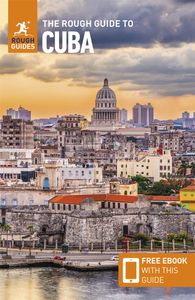
Cash is king in Cuba and you should never rely on credit or debit cards or travellers cheques for payments. For the majority of goods, services and businesses plastic is useless, whilst for all private enterprise, including paladares and casas particulares , only the paper stuff will do.
Always withdraw money when you can. Cash machines are scarce, those accepting foreign cards even scarcer and problems with them are frequent; not all banks can process foreign currency transactions and the opening hours of those that can rarely extend to the weekend or past 3.30pm in the week, especially outside Havana and the beach resorts.
From a security point of view it’s not ideal, but whenever you withdraw cash you’ll likely save yourself some hassle if you take out enough for at least a few days, especially on a road trip into the provinces.
If you are discernibly foreign then you are going to get some attention on the street. You’re likely to get pestered rather than hassled but after a while it can get tiring. One of the best bits of advice and one of the top Cuba travel tips in this scenario is to keep your cool – looking and sounding uninterested is usually enough to deter most street hustlers, known as jineteros .
Bear in mind that if they’re selling cigars they’re probably going to be fakes, and if they offer to take you to a paladar or casa particular their commission will be secretly added to your bill. Then again, some people really do just want to chat – so keep an open mind.
Many travellers to Cuba want to know what Cubans really think about their country’s politics, Fidel Castro and communism. If you’re interested in politics and Cuban society, don’t be reticent about striking up such conversations.
In a country where every block has a Committee for the Defence of the Revolution, the eyes and ears of the Party and informing on your ‘unpatriotic’ neighbours has traditionally been a state-sanctioned obligation, some do not feel comfortable being openly critical of the regime.
Be sensitive, and understand that tour guides and hotel staff, as employees of the state, are less likely to voice any strong criticism of the Government.

© Gavin Burnett
Lawyers become tour guides and doctors wait tables in Cuba – mostly for the tips that so significantly top-up their salaries (the average state wage is equivalent to around $18 a month). One of our best Cuba travel tips: tip waiters, hotel cleaners and baggage carriers, car park attendants, toilet attendants and tour guides, and be aware of the differences between people who own their own business and those who work for the state.
For example, a taxi on the meter means the driver works for the state and a tip is appropriate; most taxis don’t have a meter as they are privately owned and paying your fare, which you should negotiate in advance, is enough. Similarly, the hosts at a casa particular wouldn’t expect a tip, though if they employ cleaning staff a tip for them is always a nice gesture.
Cuba is a fascinating country, but especially for first-time visitors it can be confusing: from the unreliable public transport over the thick Cuban accent that makes communication difficult even for Spanish-speakers to the dual currency system - it's easy to get lost. All the more reason to explore Cuba with your private guide and driver. Choose from carefully selected casa particulares or high-end hotels at the beach, create your own route together with your personal local expert and receive first-hand information on news and developments in the country. Have a look at our sample itineraries, like Salsa Cubana or Complete Cuba and send in your request by clicking 'Modify this itinerary'. The local experts Carla and Romey are excited to hear from you!

- Travel Tips
Planning your own trip? Prepare for your trip
Use Rough Guides' trusted partners for great rates
Travel advice for Cuba
From travel safety to visa requirements, discover the best tips for traveling to Cuba
- Eating and drinking in Cuba
- How to get to Cuba
- Getting around Cuba: Transportation Tips
- Travel Tips Cuba for planning and on the go
- Best time to visit Cuba
Find even more inspiration for 60 here
Ready to travel and discover cuba, get support from our local experts for stress-free planning & worry-free travels.
- Where to stay
- Itineraries
- Travel advice

20 Things You Need to Know Before Travelling to Cuba
- October 9, 2023
Nick Harvey
- Travel Guide Cuba
Table of Contents
Things You Need to Know about Cuba
Introduction.
Planning a trip to the enchanting island of Cuba? Before you immerse yourself in the vibrant streets of Havana or the sandy shores of Varadero, there are some essentials you should be clued in on. From its historical roots to mouth-watering cuisine, here are 20 things every traveller must know. Ready?
Be sure to take a look at our other guides to the Caribbean and Cuba , such as the Top 10 Places to visit in Cuba . Enjoy!
5 Key Takeaways
- Historical Significance : Cuba boasts a rich history that’s evident in its streets, from the glitz and glamour of the pre-revolutionary period to the distinct socialist transformation post-1959 revolution.
- Currency Nuances : Cuba operates with two main currencies, the Cuban Convertible Peso (CUC) and the Cuban Peso (CUP). While tourists primarily use CUC, having some CUP can be beneficial for more authentic local experiences.
- Ideal Travel Period : The best months to visit Cuba, considering the weather, are between November and March. However, travelling during shoulder months might offer fewer crowds.
- Language and Cultural Appreciation : Although Spanish is the primary language, any effort to communicate, even with basic phrases, is well-received. Additionally, understanding and respecting local cultural etiquettes, such as modest dressing at religious sites, enhances the travel experience.
- Cuban Gastronomy : The local cuisine is a delightful mix of Spanish, African, and Caribbean influences, with dishes like “Ropa Vieja” and drinks like “Mojito” being central to the Cuban culinary experience.
Historical Background
Understanding Cuba’s history will enrich your travel experience tenfold.
Pre-revolutionary Cuba
Before the 1959 revolution, Cuba was known for its glitz and glamour. Casinos, cabarets, and luxury hotels attracted many celebrities and tourists. This era saw a mingling of American and Cuban cultures.
Post-revolutionary Cuba
The revolution brought radical changes, transforming Cuba into a socialist state. Old American cars, grand colonial buildings, and revolutionary slogans can be seen everywhere, adding to the country’s unique charm.
Currency & Budgeting in Cuba
While the alluring sights and sounds of Cuba might sweep you off your feet, it’s essential to keep a firm grip on your purse strings. Effectively managing your finances in this Caribbean island nation requires an understanding of its unique economic landscape.
Types of Currencies:
Cuba’s Dual Currency System
Cuba is one of the few countries with a dual currency system, which can initially seem perplexing to visitors.
Cuban Convertible Peso (CUC) : Predominantly for tourists, the CUC is pegged to the US dollar. From hotels to tourist-centric restaurants and attractions, this currency is your primary mode of transaction. It’s equivalent to foreign currencies, so you’ll likely get change in CUCs when you exchange your pounds, euros, or dollars.
Cuban Peso (CUP) : This is the local currency, used predominantly by Cubans for their day-to-day needs. When wandering off the beaten tourist paths, you’ll find that street vendors, local eateries, and provincial markets operate mainly in CUPs. It’s worth having a few of these in your pocket, as 1 CUC is much higher in value than 1 CUP. Not only will this give you a more authentic experience, but you might also discover some local delicacies or trinkets at a fraction of the tourist price.
Budgeting Tips:
Making the Most of Your Cuban Adventure on a Budget
Research and Prioritise : Before you set foot in Cuba, have a clear idea of the attractions you want to visit, the experiences you don’t want to miss, and the souvenirs you wish to take back. By prioritising, you can allocate your budget accordingly.
Eat Local : While Cuban resorts offer a plethora of dining options, trying local “paladares” (privately owned restaurants) or street food can give you a taste of authentic Cuban cuisine without breaking the bank. Remember, using CUPs in such places can be much cheaper.
Avoid Import Traps : Items that are imported, especially from the West, can be significantly more expensive in Cuba due to import restrictions and taxes. This includes certain toiletries, gadgets, and even some food items. If possible, bring essentials with you.
Barter Wisely : While it’s customary to haggle in markets, ensure you’re respectful. Understand the value of what you’re purchasing, and remember that a small amount for you can mean a lot for the local vendor.
Splurge Thoughtfully : Cuba is famed for its cigars and rum. If you wish to indulge, ensure you’re buying from reputable sources to get the genuine article. And while these might be a bit of an expense, the experience is worth the splurge for many.
Best Time to Visit Cuba
Cuba, with its tropical climate and year-round warmth, beckons travellers across all seasons. However, like any destination, there are optimal times to enjoy the best of what the island has to offer.
Seasonal Insights :
From November to March , Cuba enjoys its dry season. The days are sunny, and the nights pleasantly cool, making it the ideal time to explore both its vibrant cities and pristine beaches. This period is popular among tourists, especially those looking to escape the winter chill of northern countries. Christmas and New Year see a spike in tourists, leading to bustling streets and lively festivals.
However, if you’re someone who prefers tranquillity over tourist throngs, the shoulder months – typically late October and early April – might be more to your liking. The weather remains largely pleasant, but with the added bonus of fewer crowds, allowing for a more intimate Cuban experience.
And, true to its tropical nature, Cuba does see its fair share of rains. Instead of viewing these as a damper, embrace them as part of the Caribbean experience. After all, what’s more tropical than dancing amidst a brief, refreshing downpour?
Language & Communication in Cuba
Language is more than just words; it’s a bridge to understanding, connection, and cultural immersion. In Cuba, this bridge is primarily built on Spanish, but even without fluency, you can still cross it with ease.
Basic Phrases : While Cuba resonates with the rhythm of Spanish, you don’t need to be fluent to engage with its people. Often, it’s the simple phrases that hold the most power. A cheerful “Hola” not only greets locals but also shows your willingness to engage. “Gracias” , a token of gratitude, can light up faces, and if you’re keen on learning more, “¿Cómo estás?” (How are you?) can be a delightful icebreaker.
Communication Tips :
Gesture and Miming : A lack of language fluency can be supplemented with gestures. Whether you’re trying to ask for directions or understand the price of an item, miming can often bridge the communication gap. Plus, it often results in heartwarming, even humorous interactions that remain etched in memory.
Carry a Phrasebook : A pocket-sized Spanish phrasebook or a language app can be invaluable. Not only will it aid communication, but it’s also an excellent way to learn on the go.
Local Interaction : Engage with locals whenever possible. Cubans are renowned for their warmth and hospitality. Even a basic conversation can lead to insights into local life, hidden gems, and even friendships.
Be Patient and Positive : Communication barriers can sometimes lead to misunderstandings. Approach these with patience and a positive attitude. Your efforts to engage in their language will always be appreciated, even if it leads to the occasional mix-up.
Local Cuisine in Cuba
Delving into Cuba’s culinary landscape is akin to embarking on a gastronomic journey through time and cultures. The island’s rich history, combined with its myriad of influences, has created a cuisine that’s both diverse and distinctive.
Must-try Dishes :
Ropa Vieja : Directly translating to ‘old clothes’, Ropa Vieja is far from its namesake. This dish, made from tender shredded beef stewed in a tomato-based sauce with bell peppers and onions, boasts of rich flavours and is often served with rice or fried plantains.
Tres Leches Cake : A sweet treat that’s loved across Latin America, Cuba’s version stands out for its decadence. As the name suggests, it’s a sponge cake drenched in three kinds of milk: evaporated milk, condensed milk, and heavy cream. Topped with a light meringue or whipped cream, it’s the perfect dessert to satisfy sweet cravings.
Picadillo : A ground beef hash cooked with tomatoes, raisins, olives, and capers. Often served with rice, it offers a delightful play of sweet and salty flavours.
Yuca con Mojo : A side dish, but a star in its own right. Yuca, or cassava, is boiled till tender and then drizzled with ‘mojo’, a garlicky citrus sauce that’s a Cuban staple.
Mojito : Originating from Cuba, this refreshing cocktail is a blend of white rum, sugar, lime juice, soda water, and mint. Served over ice, it’s the quintessential Cuban summer drink.
Cuba Libre : Simple yet iconic, it’s a mix of rum, cola, and a splash of lime. The name, translating to ‘Free Cuba’, is a nod to the nation’s history and spirit.
Canchánchara : A lesser-known but traditional drink made from rum, honey, lemon, and water. Often considered a precursor to the Mojito, it’s served in clay pots, giving it a rustic touch.
Cultural Etiquette in Cuba
Every land has its unspoken rules and nuances, and understanding these can enhance your travel experience, ensuring mutual respect between you and the locals.
Dress Code : While Cuba is fairly liberal in its dress sense, especially in beach areas, it’s vital to dress modestly when visiting religious sites. Avoid sleeveless tops and short skirts or shorts. Instead, opt for long pants or dresses and carry a shawl or scarf.
Greetings : A simple nod, smile, or a “Hola” can go a long way. Cubans are warm and friendly, and initiating a greeting is always appreciated.
Salsa Dancing : Music and dance are the lifelines of Cuba. While you might not be a pro at salsa, don’t shy away from the dance floor. A few basic steps, combined with enthusiasm, will earn you appreciation and maybe a few friendly tips from the locals!
Tipping : Tipping is customary in Cuba, especially given the low wages in many service sectors. Whether it’s a restaurant, taxi, or a guided tour, a small tip is a gesture of gratitude for the service provided.
Transportation in Cuba
Navigating the streets and landscapes of Cuba is like stepping back in time, all while embracing the vibrant culture and energy of the present. The country’s transportation options are as varied as they are iconic, offering both practicality and a unique experience for travellers.
Modes of Transport :
Classic Cars : One of the most iconic images associated with Cuba is its fleet of colourful, well-preserved 1950s classic cars. Cruising down the streets of Havana in a vintage Chevrolet or Ford is not just a mode of transportation; it’s a journey through history. Many of these cars function as taxis and can be hired for city tours or regular rides.
Bicycles : Especially prevalent in smaller towns and the countryside, bicycles are a common mode of transport for locals. For tourists, renting a bike can be a wonderful way to explore at your own pace, soaking in the sights and sounds.
Horse-drawn Carriages : In certain regions, particularly in cities like Trinidad, horse-drawn carriages serve as a primary means of transport. They add a charming, old-world touch to the travel experience and are often used for short distances within cities.
Colectivos : Shared taxis, known as ‘colectivos’, are another popular mode of transport. They run on specific routes and are a cost-effective way to travel, especially for longer distances.
Tips for Travellers :
Haggling : Bargaining is an integral part of the Cuban transport culture, especially with taxis. Before hopping into a ride, ensure you negotiate and agree upon a price. Familiarising yourself with average fares can give you a bargaining edge.
Fixed Routes : For shared taxis or colectivos, know that they have fixed routes. It’s advisable to understand their path to ensure they align with your destination.
A Friendly Attitude : Cubans are known for their warmth and friendliness. A genuine smile, a greeting, or a thank you can make your transportation experience much more pleasant. Often, drivers double up as informal guides, sharing stories and tips about the local area.
Safety Tips:
Stay Vigilant : Like any travel destination, it’s crucial to always be aware of your surroundings. While Cuba is generally safe, it’s wise to keep an eye out for any suspicious activity.
Secure Your Belongings : Whether you’re in a crowded area or enjoying a leisurely ride, ensure your valuables, like wallets, cameras, and passports, are secure. Using anti-theft bags or keeping valuables close to your body can deter pickpockets.
Night-Time Caution : If you’re out and about after dark, stick to well-lit areas, especially in cities. Avoid isolated spots and always inform someone, perhaps your hotel or a travel companion, about your whereabouts.
Know Emergency Numbers : It’s always a good practice to have emergency contact numbers, such as local police or your embassy, handy.
10 practical tips for visiting Cuba
Visa Requirements : Ensure you have the required tourist card or visa before travelling. Most nationalities need a tourist card, which is often available through airlines or embassies.
Cash Over Cards : While Cuba’s accessibility to digital banking is increasing, cash is still king. US credit and debit cards don’t work in Cuba, so bring enough cash in other major currencies like EUR, GBP, or CAD to exchange locally.
Dual Currency System : Familiarise yourself with the two currencies – Cuban Convertible Peso (CUC) and Cuban Peso (CUP). While CUC is primarily for tourists, having some CUPs can be cost-effective for street vendors and local markets.
Stay Connected : Internet access is limited. Purchase Wi-Fi cards and use them in designated Wi-Fi zones, often found in public parks or specific hotels.
Accommodation : Consider staying in “casas particulares,” which are private homes licensed to offer lodging services. It’s an authentic way to experience Cuban hospitality and often more affordable than hotels.
Local Transportation : Haggling is a common practice, especially for taxis. Agree on a fare before setting off. If you’re adventurous, try out the local “colectivos” (shared taxis) or “bicitaxis” (bicycle taxis).
Language : Spanish is the primary language. Learning a few basic phrases can enhance your interaction with locals. Always carry a Spanish-English dictionary or a translation app for easier communication.
Cultural Etiquette : Respect local traditions and customs. Dress modestly when visiting religious or official sites. Engaging in local dances or music sessions is a great way to immerse yourself in the culture.
Health Precautions : Drink bottled water and avoid ice in drinks unless you’re sure it’s made from purified water. It’s also wise to keep a travel medical kit with essentials.
Plan Activities : While spontaneity is part of the adventure, some popular attractions or activities might require prior bookings. Research beforehand and perhaps make a list of must-visit spots to ensure you don’t miss out.
Frequently Asked Questions (FAQs)
Wi-Fi hotspots are available in major cities, and you can purchase internet cards for access.
It’s advisable to drink bottled water.
Most nationalities do. Always check beforehand and ensure your paperwork is in order.
No, US credit cards don’t work. Bring enough cash and exchange it locally.
Cuba operates on Cuba Standard Time (CST).
Final Thoughts
Cuba, with its rich history, diverse culture, and heartwarming people, promises an unforgettable journey. As you prepare, keep these tips in mind, and dive deep into the Cuban way of life. Ready for the adventure of a lifetime?
(Note: Ensure to check the official websites for any changes in ticket prices or visiting hours before planning your trip.) Also add us to your socials!
Thank you for reading! Adios!
Related articles: Best time to visit Cuba , Havana Travel Guide , Places to Visit in December , Discover the World’s Most Colourful Cities
Recommended websites: Visit Cuba
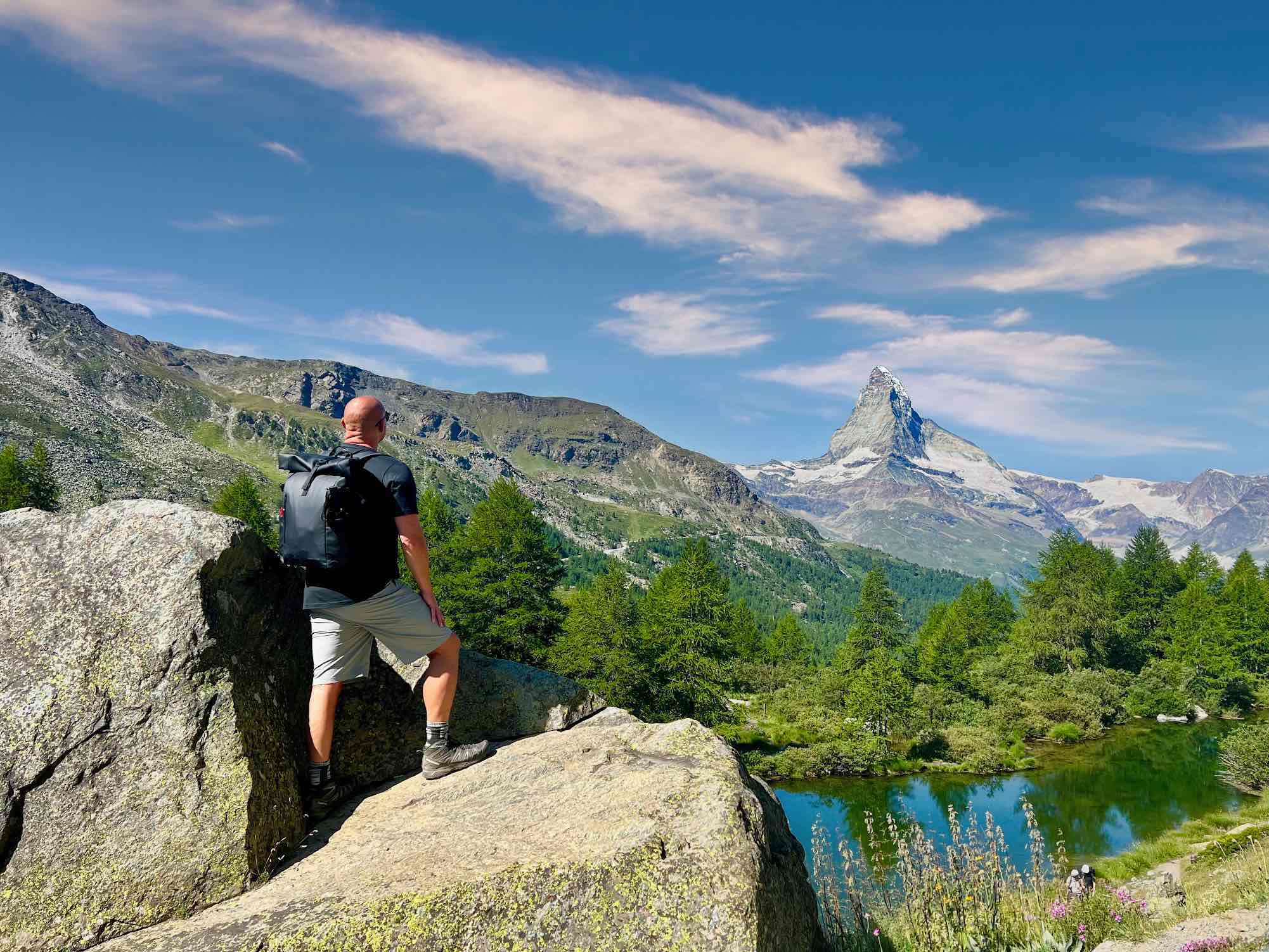
Save this post (pin it)
Share this post
Related articles.
Caribbean Main Page
Top 10 Places to visit in Cuba
Top 10 Places to visit in England
Best Festivals Worldwide
Cuba main page
World’s Most Colourful Cities
England’s Festivals
Discover Hidden Gems
Shop Our Travel Essentials
Note: This post contains affiliate links. When you make a purchase using one of these affiliate links, we get paid a small commission at no extra cost to you.

Leave a Comment Cancel Reply
Your email address will not be published. Required fields are marked *
Save my name, email, and website in this browser for the next time I comment.
Read Our Story
Popular posts, 50 inspiring quotes to fuel your travel dreams, the best time to visit mexico, paris travel guide, the best time to visit italy, when in rome: 9 historical sites you must visit, other resources, travel tips, travel resources, free travel planner.
Northern Wanderers is the go-to website for travel information and tips to help you create your perfect trip
- Destinations
- Tips & Resources
- Google Map Itineraries
- Work With Us
- Travel Planner
Social Media
Privacy Policy
Terms of Use
Copyright © 2024 – Northern Wanderers

IMAGES
VIDEO
COMMENTS
2. Fill out your passenger information in advance. Cuba uses an online form called D’Viajeros to gather traveler information, including immigration and health data, in advance of travel. Fill out the form digitally up to 72 hours before your arrival in Cuba. 3.
Here are our 30 Cuba travel tips for everyone travelling to the island : 1. Best time to travel to Cuba. The best time to visit Cuba is from towards the end of the year, starting early December up until April. With the island hot tropical climate, the summer’s average temperature is 24 degrees, whereas during the winter months of January and ...
LAST THOUGHTS: VISITING CUBA TRAVEL TIPS. Having visited Cuba as an American citizen in 2015, 2019, and 2023, I can confidently say that it was an incredibly interesting experience. Despite being a relatively poor country with limited resources, Cuba is rich in culture, history, and hospitality.
Greatest Waterfalls in Cuba. Imagine finding yourself in Cuba, surrounded by an exuberant natural environment - where the vivacious green mountains stretch out into a splendid blue sky - while the fresh Caribbean seabreeze brightens your face. And on this tropical voyage, you discover a land of waterfalls on every corner of the island.
We’re José and Carley Rojas Avila, a Havana native and a serial expat turned travel writer. We're the creators of Home to Havana. We love Cuba and use our insider knowledge to help fellow travelers just like you discover all Cuba has to offer. Our ULTIMATE guide to travel to Cuba helps demystify Cuba travel. Written by locals, we share the ...
For more Cuba travel tips related to Cuba’s currency system, check out this Ultimate Guide for Travelers. 10. Bring cash to Cuba, a lot. You can pay for all things in Cuba in cash. In fact, just a few businesses accept credit and debit cards, so you should always carry cash.
So here are my Top 25 Cuba Travel Tips. 1. Understanding The Local Culture. As with any travel destination, being respectful and understanding of the local culture in Cuba is key. Cuban society is characterized by its warm hospitality, strong community bonds, and rhythmic vitality tied closely to music and dance.
15 days / from 2961 USD. Cuba - Family, Beach, and Culture. Enjoy a 2-week family adventure visiting highlights and hidden gems of Cuba. Marvel at the colonial architecture in Havana, enjoy a ride in a Classic Car, explore the forests close to Trinidad, and relax on white sandy beaches of Cayo Levisa - this trip packs it all into one itinerary.
10 practical tips for visiting Cuba. Visa Requirements: Ensure you have the required tourist card or visa before travelling. Most nationalities need a tourist card, which is often available through airlines or embassies. Cash Over Cards: While Cuba’s accessibility to digital banking is increasing, cash is still king.